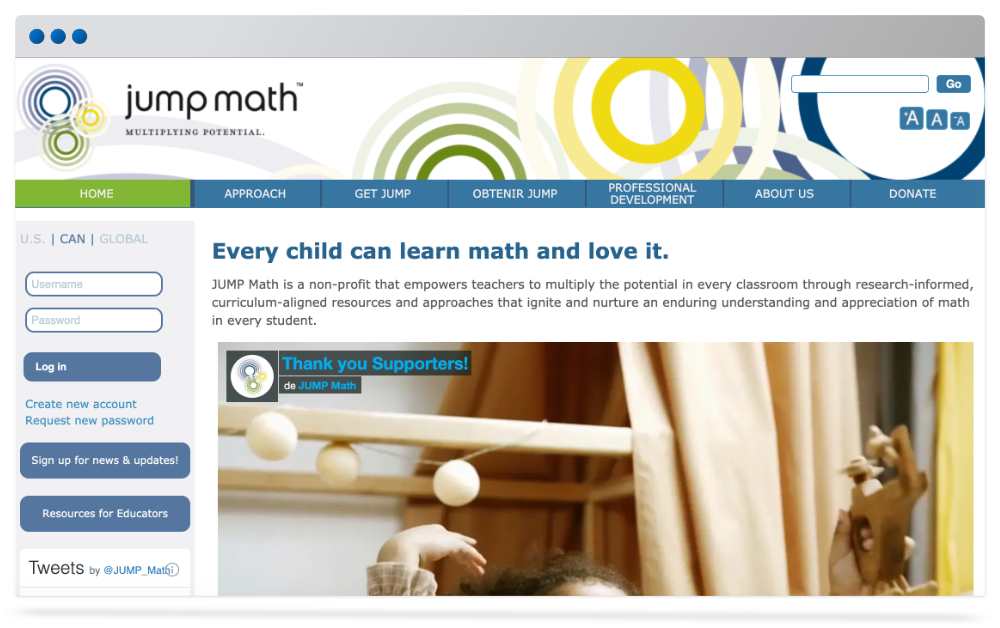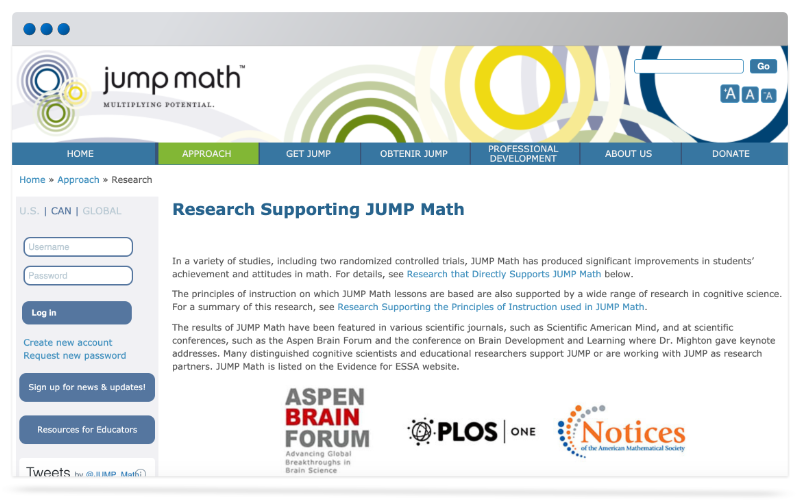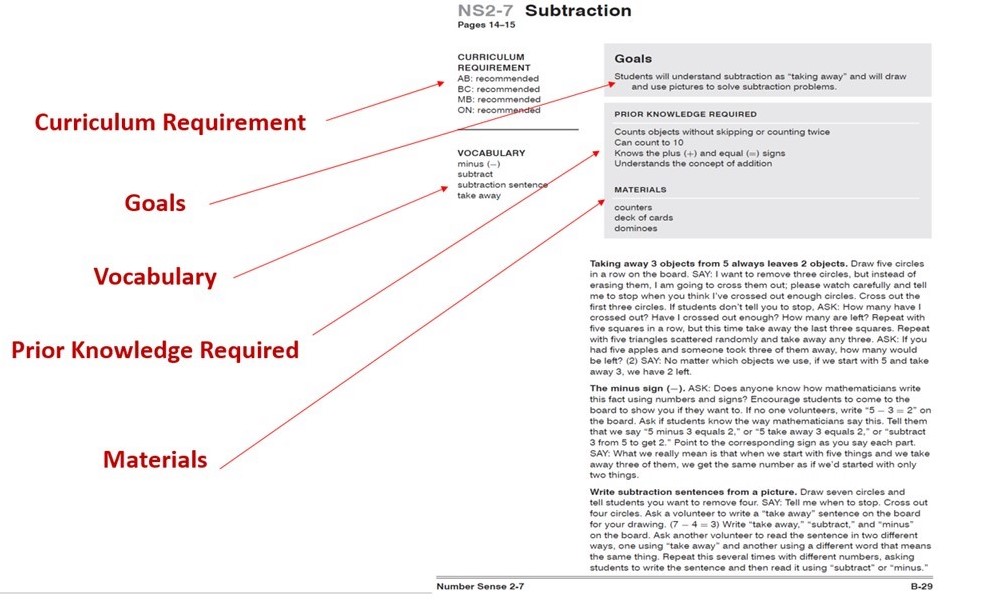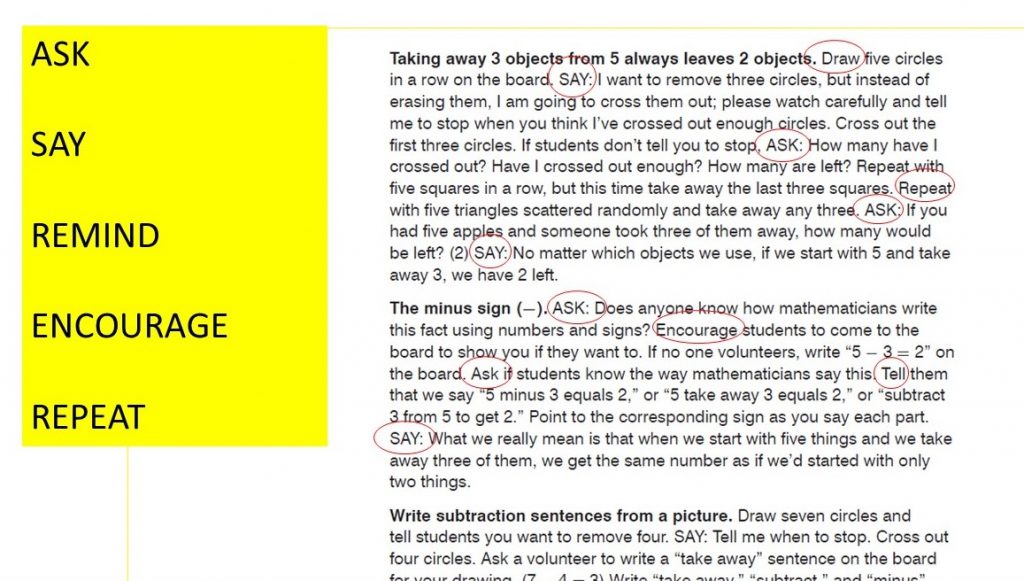ᑐᖕᖓᓱᒋᑦ ᐳᒃᑭᓂᕐᓭᑦ ᓴᓇᑦᑐᓴᐅᑎᓕᕆᓂᕐᒥ ᐃᓕᓐᓂᐊᕈᑎᑦᓴᖃᐅᑎᒧᑦ. ᑭᖕᖒᒪᒋᔭᓕᒫᑎᓐᓂᒃ JUMP Math-ᓂᒃ ᐱᒋᐊᕐᑎᓯᒍᑎᑦᓴᓄᑦ ᐃᓕᓐᓂᐊᕆᐊᖕᖓᑐᓂᑦ ᐳᕐᑐᓂᓕᓐᓄᑦ 6-ᒧᑦ ᑎᑭᑦᑐᓂᒃ ᑕᑯᓚᖓᕗᑎᑦ ᑕᒫᓂ.
ᐃᓗᓕᖏᑦᑕ ᐃᓂᓪᓚᖓᓂᖏᑦ
ᖃᐅᔨᑎᑦᓯᒋᐊᖕᖓᐅᑎ JUMP ᓴᓇᑦᑐᓴᐅᑎᖏᑦᑕ ᐃᓕᓐᓂᐊᑎᑦᓯᒍᓯᖏᓐᓂᒃ
1.1. ᓱᓇᐅᕙ JUMP ᓴᓇᑦᑐᓴᐅᑎᖏᑦ?
1.2 ᓱᓇᐅᕙ JUMP ᓴᓇᑦᑐᓴᐅᑎᑎᒍᑦ ᐃᓕᓐᓂᐊᑎᑦᓯᒍᓯᖓ?
1.3 ᐃᓕᓐᓂᐊᑎᑦᓱᒋᑦ, ᐱᒋᐅᕐᓴᑎᑦᓱᒋᑦ, ᖃᐅᔨᓴᖃᑦᑕᓱᒋᓪᓗ
1.4 ᐆᑦᑑᑏᑦ JUMP ᓴᓇᑦᑐᓴᐅᑎᖏᑦᑕ ᐱᕐᖁᓯᖏᑦ
1.5 ᑲᔪᓯᔪᒥᒃ ᖃᐅᔨᓴᕐᓂᖅ
1.6 ᖃᐅᔨᓴᕐᓂᖅ
JUMP ᓴᓇᑦᑐᓴᐅᑏᑦ ᐱᐅᓕᓂᐊᒐᖏᑦ
2.1 ᐃᓕᓐᓂᐊᑎᑦᓯᔨᐅᑉ ᒪᓕᒐᖏᑦ
2.2 ᐃᓕᓐᓂᐊᒐᑦᓴᐅᑉ ᐊᑐᐃᓐᓇᕈᕐᑎᑕᐅᒪᓂᖏᑦ
2.3 ᐃᓕᓐᓇᑎᕆᓂᖅ ᐃᓕᓐᓂᐊᑎᑦᓯᔨᐅᑉ ᒪᓕᒐᖏᓐᓂᒃ
2.4 ᑲᐅᔨᓴᕈᑏᑦ ᐱᒋᐅᕐᓴᐅᑏᓪᓗ ᐃᓕᓐᓂᐊᑏᑦ ᐱᓇᓱᒐᖏᑦ
2.5 ᖃᕆᑕᐅᔭᒃᑰᑑᑉ ᐊᓪᓚᕕᐊᓗᖓᒍᑦ (Smart board) ᐱᓇᓱᐊᕐᑎᓯᒍᑎᑦᓭᑦ
– ᐃᑯᒪᐅᑎᑎᑎᒎᕐᑐᑦ ᐃᓕᓐᓂᐊᑎᑦᓯᒍᑎᒋᐊᓪᓓᑦ
2.6 ᐃᓱᒪᒃᑯᑦ ᓴᓇᑦᑐᓴᐅᑎᕈᑏᑦ ᐊᑯᓂᐅᖕᖏᑐᖅ
2.7 ᖃᐅᔨᓴᐅᑏᑦ ᐱᐅᓕᓂᐊᒐᖏᑦ – ᖃᐅᔨᓴᐅᑎᐊᕈᐃᑦ ᖃᐅᔨᓴᐅᑏᓪᓗ
2.8 ᐊᒥᓱᓕᕐᑎᒉᑦ (BLMs)
2.9 ᑎᑭᓵᕆᔭᐅᓂᖏᑦ JUMP ᓴᓇᑦᑐᓴᐅᑏᑦ ᐱᐅᓕᓂᐊᒐᖏᑦ
ᐃᑲᔪᕐᓯᒍᑎᑦᓭᑦ ᐃᓕᓐᓂᐊᑎᑦᓯᓕᕈᓂ ᐱᒋᐅᕐᓴᓕᕈᓂᓗ
3.1 ᐱᒋᐊᕐᐸᓕᐊᓂᖅ JUMP ᓴᓇᑦᑐᓴᐅᑎᖏᓐᓂᒃ
3.2 ᐊᒥᓱᐃᓂᒃ ᐳᕐᑐᓂᓕᓐᓂᒃ ᐃᓕᓐᓂᐊᑎᑦᓯᓂᖅ
3.3 ᐅᖃᐅᓯᐅᑉ ᐁᑉᐸᖓᑕ ᐅᖃᕐᑕᐅᒍᓯᖏᑦ
ᐃᓕᓐᓂᐊᒐᓕᐊᖑᒪᔪᖅ ᐊᒻᒪᓗ ᖃᐅᔨᓴᕐᓂᖅ
4.1 ᐱᒍᓐᓇᓯᒋᐊᓕᖏᑦ
4.2 ᓱᓇᓕᕆᓂᖏᑦ
4.3 QEP ᐱᒍᓐᓇᓯᖁᔨᒍᑎᖏᑦᑕ ᖃᑦᓯᕌᕐᑎᓯᒍᑎᖏᑦ
4.4 ᐱᒋᐅᕐᐸᓕᐊᒍᓯᖅ ᐃᓕᑦᓯᕙᓪᓕᐊᓂᒃᑯᑦ
4.5 ᐃᓕᓐᓂᐊᓯᒪᓕᕐᑕᖏᓐᓂᒃ ᑐᓴᕐᑎᓯᒍᑏᑦ ᐊᖓᔪᕐᖄᕆᔭᐅᔪᓄᑦ
ᐃᓕᓐᓂᐊᑎᑦᓯᔩᑦ ᓴᐳᒻᒥᔭᐅᓂᖏᑦ
5.1 ᐱᒋᐊᕐᐸᓕᐊᓂᖅ
5.2 JUMP ᓴᓇᑦᑐᓴᐅᑎᖏᑦᑕ ᖃᕆᑕᐅᔭᒃᑯᑦ ᓄᐃᑦᓯᕕᖓ
1. ᖃᐅᔨᑎᑦᓯᒋᐊᖕᖓᓂᖅ JUMP ᓴᓇᑦᑐᓴᐅᑎᖏᑦᑕᐃᓕᓐᓂᐊᑎᑦᓯᒍᓯᖏᓐᓂᒃ
1.1 ᓱᓇᐅᕙ JUMP ᓴᓇᑦᑐᓴᐅᑎᖏᑦ?
JUMP ᓴᓇᑦᑐᓴᐅᑎᖏᑦ ᐃᓱᒪᒋᔭᐅᒍᑎᖃᕐᓯᒪᕗᖅ ᐊᒻᒪᓗ ᐃᓐᓕᓂᐊᑎᑦᓯᕕᒻᒥ ᐱᐅᓕᓂᐊᒐᖏᑦ ᐱᐅᓯᐅᒥᑎᑦᓯᒋᐊᕐᓂᓂᒃ ᐃᓕᓐᓂᐊᑎᑦᓯᓕᕈᓂ ᓴᓇᑦᑐᓴᐅᑎᓕᕆᐅᑎᓂᒃ ᐊᒻᒪᓗ ᐃᑲᔪᕐᓯᒍᑕᐅᒍᓐᓇᓱᓂ ᐃᓕᓐᓂᐊᑎᓂᒃ ᐊᓕᐊᒋᔭᖃᕐᓗᑎᒃ ᐱᓚᕿᒍᓐᓇᓯᐅᑎᒋᓗᒋᓗ.
ᐅᑉᐱᕈᓲᓯᒋᓲᕘᑦ ᐃᓓᓐᓈᐱᖏᑦ ᐃᓅᓕᕐᓱᑎᒃ ᐱᔪᓐᓇᕆᐊᖏᑦ. ᑭᓯᐊᓂᓕ ᐅᑉᐱᕈᓲᓯᒋᓲᕗᑦ ᐱᑦᔪᑕᐅᓚᕿᑦᔭᖏᓪᓚᖅ ᐱᓀᓗᑕᒧᑦ.
ᔮᓐ ᒣᑕᓐ
ᑖᓐᓇ ᑕᑯᓐᓇᕋᑦᓴᖅ ᓄᐃᑕᑎᑦᓯᔪᖅ JUMP ᓴᓇᑦᑐᓴᐅᑎᖏᑦᑕ ᐱᐅᓕᓂᐊᒐᖏᑦᑕ ᐊᑐᕐᑕᐅᒍᓯᖏᓐᓂᒃ ᑐᑭᒧᐊᑦᑎᓱᒋᑦ ᓴᐳᒻᒥᓂᖃᕐᓱᓂ ᐱᒐᓱᒻᒪᕆᑦᑎᓯᑦᓱᓂ ᐃᓕᓐᓂᐊᑎᓂᒃ.
1.2 ᓱᓇᐅᕙ JUMP ᓴᓇᑦᑐᓴᐅᑎᑎᒍᑦ ᐃᓕᓐᓂᐊᑎᑦᓯᒍᓯᖓ?
JUMP ᓴᓇᑦᑐᓴᐅᑎᑎᒍᑦ ᐃᓕᓐᓂᐊᑎᑦᓯᒍᓯᖓ ᐅᑉᐱᕆᔭᓕᒃ ᐱᐊᕋᓕᒫᑦ ᐃᓕᓐᓂᐊᕕᓐᓂ, ᑌᒃᑯᐊᖑᒐᓗᐊᓪᓗ ᓇᓗᓀᕐᑕᐅᒪᔪᑦ ᐃᓕᑦᓯᓯᕇᑦᑑᒋᐊᖏᑦ ᐅᕝᕙᓘᓐᓃᑦ ᓴᓇᑦᑐᓴᐅᑎᓂᒃ ᐊᔪᕆᔭᖃᕐᑐᑦ ᐱᔪᓐᓀᓕᓯᒪᔪᑦ, ᓴᓇᑦᑐᓴᐅᑎᓂᒃ ᐱᓯᑎᖕᖑᓚᕆᒍᓐᓇᕆᐊᖏᑦ. JUMP ᓴᓇᑦᑐᓴᐅᑎᖏᑦᑕ ᐃᓕᓐᓂᐊᒐᕐᑕᖏᑦ ᐃᓕᓐᓂᐊᑎᑦᓯᔩᑦ ᒪᓕᒐᖏᓐᓂ ᐊᑐᐃᓐᓇᐅᕕᖃᕐᑎᓯᔪᑦ ᐃᓕᓐᓂᐊᑎᑦᓯᔨᓄᑦ ᐱᒃᑯᑎᓂᒃ ᐱᒍᓐᓇᑎᑦᓯᓚᖓᔪᓂᒃ ᓄᑖᒥᒃ ᖃᐅᔨᒪᐅᓯᕐᒥᒃ ᐱᕙᓪᓕᐊᒍᓯᖃᕐᓱᓂ ᐃᓚᐅᓚᕿᒍᒪᓕᕐᓂᖃᑎᓯᑦᓱᑎᒃ ᐃᓕᓐᓂᐊᑐᓂᒃ ᓄᑖᑦ ᑐᑭᖃᓚᑦᓯᒍᓰᑦ, ᐊᒻᒪᓗ ᐱᕈᕐᐸᓕᐊᑎᑦᓯᓯᓗᑎᒃ ᐱᔪᓐᓇᑐᕆᓂᕐᒥᒃ.
ᐱᒐᓱᐊᒻᒪᕆᓐᓇᑐᓂᒃ ᓀᓪᓕᑎᕆᓂᖅ ᒥᑭᔫᓈᕐᑎᑐᓕᐊᕆᓗᒋᑦ; ᐱᐊᕋᓕᒫᑦ ᐱᔭᕆᐅᑦᓯᐊᓗᑎᒃ ᐊᓂᒎᑎᒍᓐᓇᖁᑦ ᓴᓇᑦᑐᓴᐅᑎᓂᒃ!
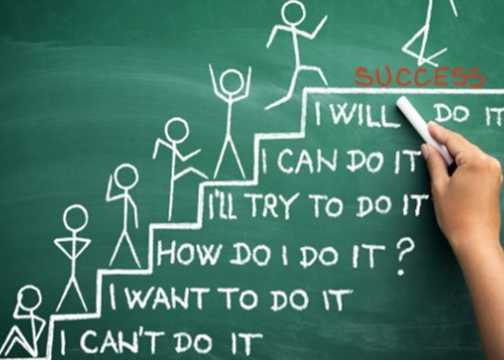
1.3 ᐃᓕᓐᓂᐊᑎᑦᓱᒋᑦ, ᐱᒋᐅᕐᓴᑎᑦᓱᒋᑦ, ᖃᐅᔨᓴᖃᑦᑕᓱᒋᑦ
JUMP ᓴᓇᑦᑐᓴᐅᑎᓕᕆᐅᑎᖏᑦ ᐃᓕᓐᓂᐊᑎᑦᓯᒍᖓ ᐱᕐᖁᓯᓕᒃ ᐃᓕᓐᓂᐊᑎᑦᓯᖄᕐᓱᓂ, ᐱᒋᐅᕐᓴᑎᑦᓯᓱᓂ, ᖃᐅᔨᓴᓯᑦᓱᒋᑦ.
JUMP ᓴᓇᑦᑐᓴᐅᑎᓕᕆᐅᑎᖏᑦ ᐃᓕᓐᓂᐊᑎᑦᓯᒍᖓ ᐱᕐᖁᓯᓕᒃ ᐃᓕᓐᓂᐊᑎᑦᓯᖄᕐᓱᓂ, ᐱᒋᐅᕐᓴᑎᑦᓯᓱᓂ, ᖃᐅᔨᓴᕐᓱᒋᑦ ᓀᑦᑐᒥᒃ ᐃᓕᓐᓂᐊᑎᑦᓯᓂᖅ ᑐᑭᓯᑎᑦᓯᓂᒃᑯᑦ ᑭᖑᓂᖃᓚᖓᑦᓱᑎᒃ ᐃᓕᓐᓂᐊᑏᑦ ᐱᒋᐅᕐᓴᑎᑦᓱᒋᑦ ᐊᑕᔪᒥᓪᓗ ᖃᐅᔨᓭᓐᓇᓱᒋᑦ ᖃᕆᐊᒥ ᐃᓕᓐᓂᐊᕕᖏᓐᓂ ᐃᓕᓐᓂᐊᑎᑦᓯᓇᐅᑎᓪᓗᒍ. ᖃᐅᔨᓴᖏᓐᓇᓱᒋᓪᓗ ᐃᓕᓐᓂᐊᕆᐊᓕᖏᓐᓂᒃ ᐃᓕᓐᓂᐊᖏᓐᓇᑎᓪᓗᒋᑦ ᐃᓕᓐᓂᐊᑎᑦᓯᔨ ᐃᓕᓐᓂᐊᑎᐅᑉ ᑐᑭᓯᓂᖏᓐᓂᒃ ᖃᐅᔨᓭᓐᓇᕆᐊᓕᒃ ᐊᓯᖏᓐᓄᑦ ᓅᒋᐊᓚᐅᕋᓂ ᐃᓕᓐᓂᐊᕆᐊᓕᖏᓐᓄᑦ.
- ᐃᓱᒪᒃᑯᑦ ᓴᓇᑦᑐᓴᐅᑎᕐᓂᖅ ᐊᑯᓂᐅᖕᖏᑐᖅ: 5 ᑕᕐᓵᐲᑦ
- ᐃᓕᓐᓂᐊᒐᖅ ᐊᑐᐃᓐᓇᕈᕐᑎᓯᒪᔪᖅ: 10-20 ᑕᕐᓵᐲᑦ
- ᑭᖑᓂᖓᒍᑦ ᐃᓕᓐᓂᐊᑏᑦ ᐱᓇᓱᒐᖏᑦ (AP’s) 5-10 ᑕᕐᓵᐲᑦ
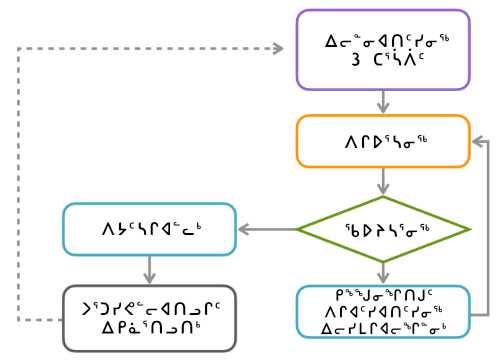
ᐅᑯᐊ ᑕᑯᓐᓇᕋᑦᓴᓕᐊᒍᓯᒪᔪᑦ ᔮᓐ ᒣᑕᓐ ᐃᓕᓭᒍᓯᒥᒃ ᐃᓕᓐᓂᐊᑎᑦᓯᑎᓪᓗᒍ.
1.4 ᐆᑦᑑᑏᑦ JUMP ᓴᓇᑦᑐᓴᐅᑎᖏᑦᑕ ᐱᕐᖁᓯᖏᑦ
4-ᖑᕗᑦ ᐆᑦᑑᑏᑦ ᐃᓕᓐᓂᐊᑎᑦᓯᒍᓰᑦ JUMP ᓴᓇᑦᑐᓴᐅᑎᖏᓐᓂ. ᐊᑐᓂᑦ ᐆᑦᑑᑏᑦ ᑕᑯᑦᓴᐅᑎᑦᓯᔪᖅ ᓴᓇᑦᑐᓴᐅᑏᑦ ᐃᓕᓐᓂᐊᓇᖓᓂ 45-ᓂᒃ ᑕᕐᓵᐱᓐᓂᒃ, ᓈᒻᒪᓈᕐᑎᒋᐊᕐᓯᒪᔪᖅ ᐃᓕᓐᓂᐊᒐᕐᒧᑦ, ᐃᓕᓐᓂᐊᑎᑦᓯᓂᖅ, ᐱᒋᐅᕐᓴᓂᕐᒧᑦ, ᐱᔭᑦᓴᓄᑦ, ᐊᕗᖓᐅᓕᒋᐊᕈᑎᓄᑦ ᐊᑕᔪᒥᓪᓗ ᖃᐅᔨᓴᖃᑦᑕᓂᕐᒧᑦ.
ᐆᑦᑑᑎ 1
ᐆᑦᑑᑎ 2
ᐆᑦᑑᑎ 3
ᐆᑦᑑᑎ 4
1.5 ᐊᑕᔪᒥᒃᖃᐅᔨᓴᕐᓂᖅ
ᐊᑕᔪᒥᒃ ᖃᐅᔨᓴᕐᓂᖅ ᐱᓪᓚᕆᑦᑕᕆᔭᐅᔪᖅ ᐅᒃᑯᐃᓯᒍᑎᐅᒐᒥ…ᐅᑯᐊ ᒪᓕᒐᑦᓭᑦ ᐃᓱᒪᒌᓐᓇᓗᒋᑦ
- ᐃᓕᓐᓂᐊᑎᓕᒫᓂᒃ ᑐᑭᓯᔪᕆᑦᓯᓕᕐᑐᕆᐊᖃᖕᖏᑐᑎᑦ
- ᐃᓕᓐᓂᐊᑏᑦ ᐊᐱᕆᓗᑭᑕᖃᑦᑕᓗᒋᑦ
- ᓈᓚᓪᓗᒋᑦ ᑭᐅᒍᓯᖏᑦ ᐅᖄᖃᑎᒌᓐᓂᖏᑦ
- ᑕᑯᒋᐊᖃᑦᑕᓗᒋᑦ ᐱᒋᐅᕐᓴᓕᕐᐸᑕ
- ᐊᑐᕐᓗᒋᑦ ᖃᐅᔨᑎᑦᓯᒍᓯᖃᕐᓂᖅ, ᐊᓪᓚᕕᐊᐲᑦ ᖃᑯᕐᑌᑦ, ᐱᐅᓕᓂᐊᒐᖏᑦ ᖃᐅᔨᓴᕈᑏᑦ ᐃᓕᑕᖏᓐᓂᒃ
- ᐊᑐᐃᓐᓇᐅᓗᑎᑦ ᐋᕐᖀᒋᐊᕆᐊᖃᕈᕕᑦ ᓇᓗᓕᐅᕐᖃᐸᑕ, ᑐᑭᓯᑦᓯᐊᖏᑉᐸᑕ ᐃᓕᑦᓯᖏᓐᓂᖃᕐᓯᒪᑉᐸᑕᓘᓐᓃᑦ
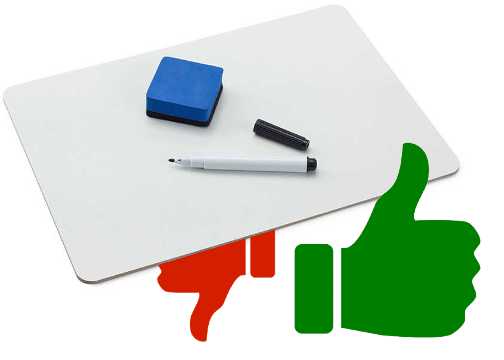
1.6 ᖃᐅᔨᓴᕐᓂᖅ
JUMP ᓴᓇᑦᑐᓴᐅᑎᖏᑦ ᑐᖕᖓᕕᓖᑦ ᑭᖑᓪᓕᐹᒥ ᖃᐅᔨᓴᕐᑕᐅᒍᑎᕕᓂᖏᓐᓂᒃ ᐃᓱᒪᒍᓯᖓᑕ ᓱᑯᐃᔦᓂᐅᑉ ᐃᓕᑦᓯᑎᑦᓯᒍᓯᐅᓪᓗ. ᑐᑭᓯᒋᐊᓪᓚᕈᒪᒍᕕᑦ ᖃᐅᔨᓴᕐᑕᐅᒪᔪᓂᒃ ᓴᐳᑦᔨᓂᖏᓐᓂᒃ JUMP ᓴᓇᑦᑐᓴᐅᑎᖏᑦᑕ ᖃᐅᔨᓴᕐᓂᖅ ᓚᔪᒨᕐᓗᑎᑦ ᖃᕆᑕᐅᔭᒃᑯᑦ ᑕᑯᑦᓴᐅᑎᑦᓯᕕᖓᓂ.
2. JUMP ᓴᓇᑦᑐᓴᐅᑏᑦ ᐱᐅᓕᓂᐊᒐᖏᑦ
2.1 ᐃᓕᓐᓂᐊᑎᑦᓯᔨᐅᑉ ᒪᓕᒐᖏᑦ
JUMP Math ᐃᓕᓭᔩᑦ ᐃᑲᔪᕐᑕᐅᒍᑎᖏᑦ ᐊᑐᐃᓐᓀᑦ ᑲᑎᕕᒃ ᐃᓕᓴᕐᓂᓕᕆᓂᐅᑉ ᑕᑯᑦᓴᐅᕕᖓᓂ ᐅᕙᓂ Community on Teams ᐃᓚᖃᕐᓱᑎᓗ ᐅᑯᓂᖓ:
- ᐃᓕᓐᓂᐊᑎᑦᓯᔨᐅᑉ ᒪᓕᒐᖏᑦ;
- ᐃᓕᓐᓂᐊᑏᑦ ᐱᓇᓱᒐᖏᑦ ᖃᐅᔨᓴᕐᓂᒧᑦ ᐊᒻᒪᓗ ᐱᒋᐅᕐᓴᐅᑏᑦ;
- ᖃᕆᑕᐅᔭᒃᑰᑑᑉ ᐊᓪᓚᕕᐊᓗᖓᒍᑦ ᐱᓇᓱᐊᕐᑎᓯᒍᑎᑦᓭᑦ ᐃᓕᑦᓯᑎᑦᓯᒋᐊᕈᑏᑦ;
- ᖃᐅᔨᓴᐅᑎᐊᕈᐃᑦ ᖃᐅᔨᓴᐅᑏᓪᓗ.
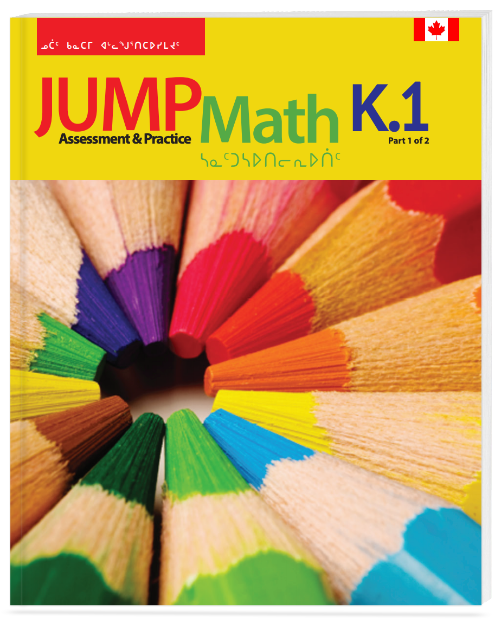
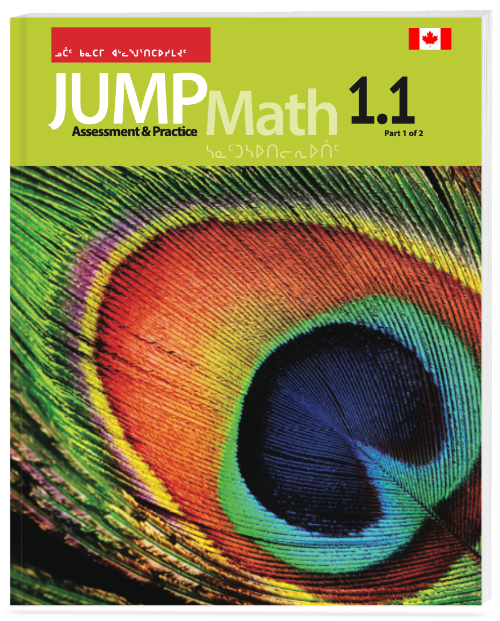
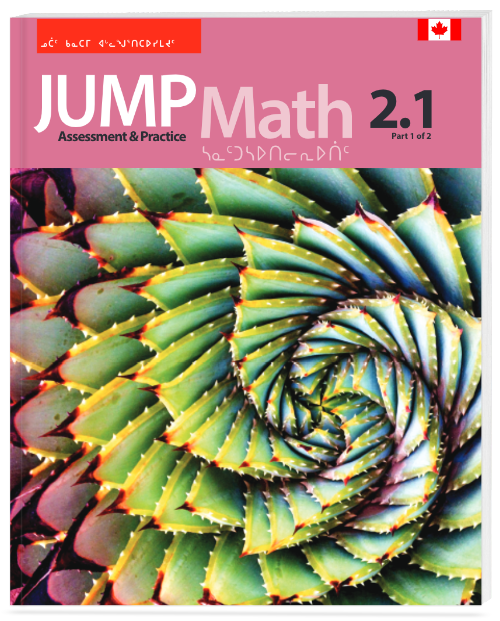
2.2 ᐃᓕᓐᓂᐊᒐᑦᓴᐅᑉ ᐊᑐᐃᓐᓇᕈᕐᑎᑕᐅᒪᓂᖏᑦ
2.3 ᐃᓕᓐᓇᑎᕆᓂᖅ ᐃᓕᓐᓂᐊᑎᑦᓯᔨᐅᑉ ᒪᓕᒐᖏᓐᓂᒃ
ᐃᓕᓐᓂᐊᑎᑦᓯᔩᑦ ᒪᓕᒐᖓ (TR) ᑕᖏᓪᓚᕆᒋᕙᐅᒃ JUMP ᓴᓇᑦᑐᓴᐅᑎᖏᑦᑕ ᐊᑐᐃᓐᓇᕈᕐᑎᓯᒪᐅᑎᖏᓐᓂ. ᑐᑭᓯᕙᓪᓕᐊᓂᖅ ᐃᓘᓐᓇᖏᓐᓂᒃ ᑖᒃᑯᓂᖓ ᐊᑐᐃᓐᓇᐅᑎᑕᐅᔪᓂᒃ:
- ᐱᐅᓯᐅᒥᓯᒪᔪᑦ ᐊᑐᐃᓐᓇᕈᕐᑎᓯᒪᓂᖏᑦᑕ ᐃᓕᓐᓂᐊᑕᐅᔪᑦᓴᖏᑦ ᐃᓘᓐᓇᒍᑦ
- ᐋᕐᕿᒋᐊᕐᓯᒪᔪᑦ ᐃᓕᓐᓂᐊᑎᑦᓯᒍᓰᑦ ᑐᕌᒐᓕᐅᕈᑎᖏᑦ
- ᑐᑭᓯᓇᑦᓯᐊᑐᑦ ᓂᕈᐊᒍᓐᓇᓂᖃᕐᓱᓂ ᐃᓕᓐᓂᐊᒐᑦᓴᓂᒃ
- ᐃᓱᒪᑦᓴᓯᐅᕈᑎᐅᓯᒪᔪᑦ ᐅᖃᐅᓯᖏᑦ ᓴᓇᑦᑐᓴᐅᑏᑦ ᐃᓱᒪᑎᒎᕐᑐᑦ ᐊᒻᒪᓗ ᓇᓗᓀᕐᓯᒪᑦᓱᑎᒃ ᐃᒣᓕᐅᖁᔨᒍᑎᖏᑦ
ᐱᒻᒪᕆᑦᑕᖏᑦ ᐃᓚᒋᔭᐅᔪᑦ TR-ᒧᑦ
- ᐃᓗᓕᖏᑦᑕ ᐃᓂᓪᓚᖓᓂᖏᑦ
- ᐃᓱᒪᒃᑯᑦ ᓴᓇᑦᑐᓴᐅᑎᕐᓂᖅ ᐊᑯᓂᐅᖕᖏᑐᖅ
- ᐃᓕᓐᓂᐊᒐᑦᓴᐅᑉ ᐊᑐᐃᓐᓇᕈᕐᓯᒪᓂᖏᑦ
- ᐊᒥᓱᓕᕐᑎᒉᑦ (BLM’S)
- ᖃᐅᔨᓴᐅᑎᐊᕈᐃᑦ ᖃᐅᔨᓴᐅᑏᓪᓗ
- ᑭᐅᑦᔪᑎᖏᑦ
2.4 ᖃᐅᔨᓴᕈᑏᑦ ᐱᒋᐅᕐᓴᐅᑏᓪᓗ ᐃᓕᓐᓂᐊᑏᑦ ᐱᓇᓱᒐᖏᑦ
ᖃᐅᔨᓴᕈᑏᑦ ᐱᒋᐅᕐᓴᐅᑏᓪᓗ ᐃᓕᓐᓂᐊᑏᑦ ᐱᓇᓱᒐᖏᑦ (AP) ᐊᑐᕐᑕᐅᒋᐊᓖᑦ ᑭᓯᐊᓂ ᒪᕐᕈᐃᑎᒍᑦ ᐃᓕᓐᓂᐊᑎᑦᓯᔨᐅᑉ ᒪᓕᒐᖓ ᓯᕗᓪᓕᐅᑎᓗᒍ ᐊᑐᕐᑕᐅᔪᑦᓴᐅᒐᑎᒃ ᐃᓕᓐᓂᐊᑎᑦᓯᓂᖃᓚᐅᕐᑎᓇᒍ (ᐊᑐᐃᓐᓇᕈᕐᑎᓯᒪᔪᓂᒃ ᐃᓕᓐᓂᐊᒐᑦᓴᓂᒃ).
JUMP ᓴᓇᑦᑐᓴᐅᑎᖏᑦ ≠ ᐱᓇᓱᒐᑦᓭᑦ ᐊᑐᐃᓐᓇᕈᕐᑎᓯᒪᐅᑎᖏᑦ
ᒪᕐᕉᒃ ᐃᓕᓐᓂᐊᑏᑦ ᐱᓇᓱᒐᖏᒃ ᐃᓗᐃᑦᑐᒥᒃ ᐃᓕᓐᓂᐊᒐᑦᓴᓕᐊᖑᒪᔫᒃ ᐃᓗᓕᖃᕐᓱᑎᒃ ᐅᑯᓂᖓ: ᐊᑦᔨᒌᖕᖏᑐᑦ ᐱᒋᐅᕐᓴᐅᑏᑦ, ᐱᔭᑦᓴᒋᐊᓪᓓᑦ, ᐱᓇᓱᒐᑦᓭᑦ ᐊᕗᖓᐅᓕᒋᐊᕈᑎᖏᓪᓗ
- ᐱᕕᑦᓴᖃᕐᑎᓯᔪᖅ ᐱᒍᓐᓇᓯᕙᓪᓕᐊᓂᕐᒥᒃ, ᓲᖑᓯᓕᐅᒥᑎᑦᓯᓂᖃᕐᓱᓂ, ᐱᒍᓐᓇᓯᓪᓚᕆᓐᓂᒥᒃ
- ᐊᑐᐃᓐᓇᐅᑎᑦᓯᔪᑦ ᓲᖑᓰᒋᐊᕐᑎᓯᓂᒥᒃ ᐃᓱᒪᑖᑦᓴᓂᒃ ᐊᑕᐅᓯᐅᓈᕐᑎᑐᓂᒃ ᓈᒻᒪᓈᑦᓯᐊᓱᑎᒃ ᐱᒋᐅᕐᓴᐅᑎᖏᑦ

ᐃᓕᓐᓂᐊᑎᑦᓯᔩᑦ ᐊᑑᑎᓪᓚᕆᒋᐊᖃᕐᖁᑦ ᑐᑭᓯᑦᓯᐊᒪᖔᑕ ᐊᑌᓐᓇᑐᒥᓪᓗ ᖃᐅᔨᓴᕐᓂᖃᖃᑦᑕᓗᑎᒃ ᐱᒋᐊᓚᐅᕋᑎᒃ ᖃᐅᔨᓴᖕᖏᓂᕐᒥᓂ ᐃᓕᓐᓂᐊᑏᑦ ᐱᓇᓱᒐᖏᓐᓂᒃ (AP)-ᓂᒃ. ᐱᒋᐅᕐᓴᐅᑏᑦ ᓴᓇᔭᐅᒪᕗᑦ ᐃᓕᓐᓂᐊᑏᑦ ᐃᓕᓐᓂᐊᑎᑕᐅᒍᑎᒋᓯᒪᖕᖏᑕᒥᓐᓂᒃ ᖃᐅᔨᒪᒋᐊᑐᖕᖏᒪᑕ ᐃᓕᓐᓂᐊᑕᐅᔪᑦᓴᓕᐊᕆᖕᖏᑐᐊᐸᑦ. ᑲᔪᓯᑎᒋᐊᖃᖕᖏᓚᑦ ᐃᓕᓐᓂᐊᑏᑦ ᐱᓇᓱᒐᒥᓐᓂᒃ ᐃᓕᓐᓂᐊᖄᕐᓯᒪᖕᖏᑯᑎᒃ ᐃᓕᑦᓯᒋᐊᓕᒻᒥᓂᒃ.
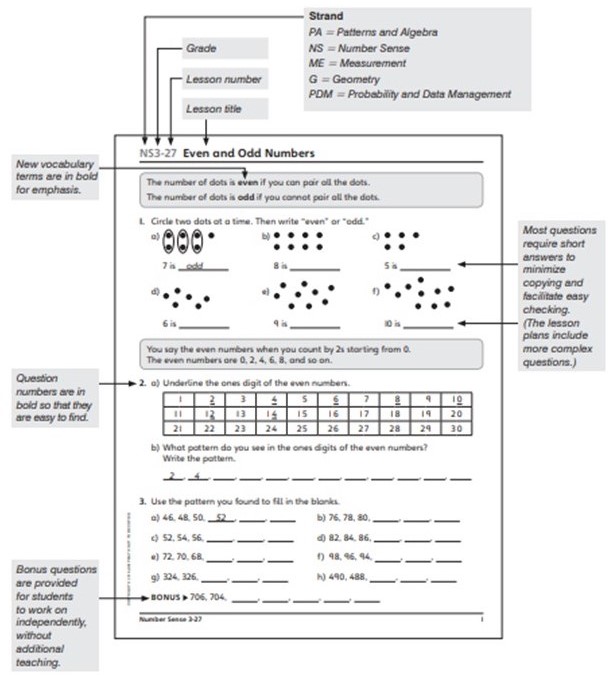
2.5 ᖃᕆᑕᐅᔭᒃᑰᑑᑉ ᐊᓪᓚᕕᐊᓗᖓᒍᑦ (Smart Board) ᐱᓇᓱᐊᕐᑎᓯᒍᑎᑦᓭᑦ
ᐊᑐᓂᑦ JUMP ᓴᓇᑦᑐᓴᐅᑎᖏᑦᑕ ᐃᓕᓐᓂᐊᒐᑦᓴᖏᑦ ᐃᑯᒪᐅᑎᒃᑰᑐᑦ ᑕᑯᓐᓇᑎᑦᓯᒍᑏᑦ ᐱᔭᕆᐊᑭᓪᓕᕆᒍᑏᑦ ᐃᓕᓐᓂᐊᑎᑦᓯᓗᓂ ᐃᓕᓐᓂᐊᒐᑦᓴᐅᑉ ᑐᑭᖏᓐᓂᒃ.
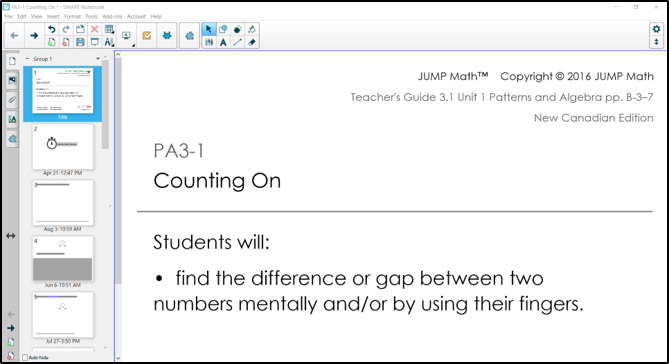
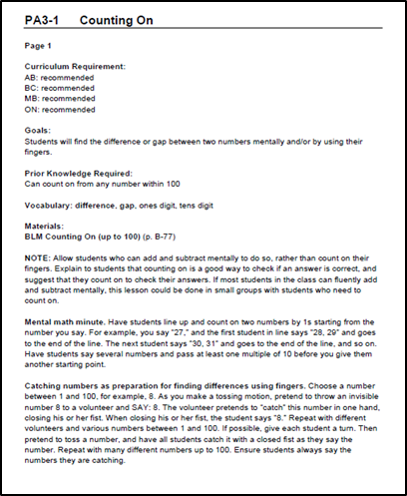
ᐃᓕᓐᓂᐊᑎᑦᓯᓂᖅ, ᐱᒋᐅᕐᓴᓂᖅ ᖃᐅᔨᓴᕐᓃᓗ ᐃᓚᖃᕐᓱᑎᒃ ᐊᑐᐃᓐᓇᕈᕐᑎᓯᒪᔪᓂᒃ ᐃᓕᑦᓯᔭᐅᒋᐊᓕᓐᓂᒃ ᐊᒻᒪᓗ ᐃᑯᒪᐅᑎᒃᑰᑐᑦ ᐃᓕᓐᓂᐊᕋᑦᓭᑦ
ᖃᕆᑕᐅᔭᒃᑯᑦ ᐃᓕᑦᓯᑎᑦᓯᒋᐊᕈᑏᑦ ᐃᓗᓕᖃᕐᓱᑎᒃ ᐊᒥᓲᖕᖏᑐᓂᒃ ᐊᓪᓚᓯᒪᔪᖃᕐᓱᑎᒃ, ᑐᖑᔪᕐᑕᓂᓪᓗ ᑕᐅᑦᑐᖃᕐᓱᑎᒃ ᐃᓕᑦᓯᒋᐊᓕᖏᑦ ᐅᖃᐅᓰᑦ, ᐃᓗᓕᖃᕐᓱᑎᒃ ᐃᓘᓇᖏᓐᓂᒃ ᐱᑕᓕᓐᓂᒃ ᓇᓗᓀᕐᓯᕕᓐᓂ ᐃᒣᓕᖓᓂᕃᒍᓯᕐᓂᓗ ᑭᖕᖒᒪᓇᕐᐸᑕ ᐊᒻᒪᓗ ᐋᕐᕿᒋᐊᕐᑕᐅᒍᓐᓇᓯᐊᕐᑐᓂᒃ.
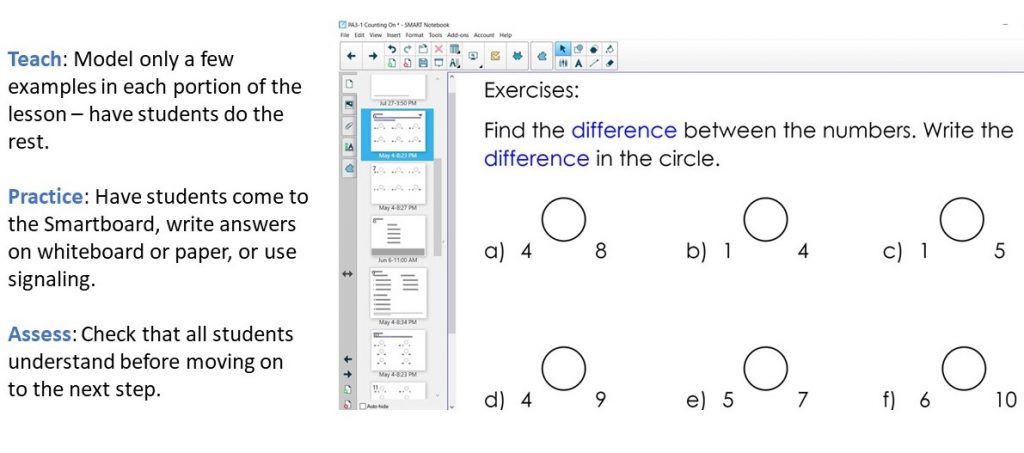
ᓱᒧᑦ ᐊᑐᕆᐊᓖᑦ ᑲᕆᑕᐅᔭᒃᑯᑦ ᐃᓕᑦᓯᑎᑦᓯᒋᐊᕈᑏᑦ?
- ᐃᑲᔪᕐᓯᓲᑦ ᐃᓕᓐᓂᐊᑎᑦᓯᔨᐅᑉ ᐊᑐᐃᓐᓇᕈᕐᑎᓂᖓᓂᒃ
- ᐃᑲᔪᕐᓯᔪᑦ ᐃᓕᓐᓂᐊᑎᓂᒃ ᐃᓚᐅᓕᕐᑎᓯᓂᕐᒥᒃ
- ᐱᓇᓱᖃᑎᒌᓕᐅᒥᑎᑦᓯᔪᖅ ᐃᓕᓐᓂᐊᑎᓂᒃ ᐃᓕᓐᓂᐊᑎᑦᓯᔨᒥᓪᓗ
- ᑕᑯᑦᓴᓚᕆᐅᑎᑦᓯᔪᑦ ᐃᓕᑦᓯᑎᑦᓯᒋᐊᕈᑏᑦ ᐱᑦᔪᑎᓪᓚᕆᖏᓐᓂᒃ
- ᐱᔭᕆᐊᑭᓪᓕᑎᕆᔪᑦ ᑲᔪᓯᑦᓯᐊᓂᖏᓐᓂᒃ ᐃᓕᓐᓂᐊᒐᑦᓴᒥᒃ
- ᐃᓚᖃᕐᓱᑎᒃ:
- ᐅᖃᐅᓯᕐᓂᒃ, ᐊᓪᓚᓯᒪᔪᓂᒃ
- ᐊᐱᕐᓲᑏᓂᒃ, ᐃᕐᙯᑎᑦᓯᒋᐊᕐᓂᓂᒃ, ᑐᑭᓯᓇᕐᑎᓯᒍᑎᓂᒃ
- ᓴᓇᒻᒣᑦ, ᐃᓂᓪᓚᖓᐅᑏᑦ, ᐃᒣᓕᖓᓂᕃᒍᓰᑦ
- ᐱᒋᐅᕐᓴᐅᑏᑦ, ᐱᔭᑦᓭᑦ ᐊᕗᖓᐅᓕᒋᐊᕈᑏᓪᓗ
2.6 ᐃᓱᒪᒃᑯᑦ ᓴᓇᑦᑐᓴᐅᑎᕐᓂᖅ ᐊᑯᓂᐅᖕᖏᑐᖅ
ᐃᓱᒪᒃᑯᑦ ᓴᓇᑦᑐᓴᐅᑎᕐᓂᖅ ᐊᑯᓂᐅᖕᖏᑐᖅ ᓴᓇᑦᑐᓴᐅᑏᑦ ᑐᖕᖓᕕᓕᕐᓯᒪᐅᑎᖏᓐᓂ ᐃᓚᖃᕐᓱᑎᒃ ᑭᓯᑦᓯᒍᑎᓂᒃ ᑐᑭᖃᓚᑦᓯᓂᕐᓂᒃ, ᐅᓄᕐᓂᓂᒃ ᓇᓗᒋᔭᖃᖕᖏᓯᐊᕐᓂᖅ ᐊᒻᒪᓗ ᐊᑐᓕᕐᑎᓯᑦᓯᐊᕈᓐᓇᑐᖅ ᑭᓯᑦᓯᒍᑎᒥᒃ ᑐᑭᖃᓚᑦᓯᓂᕐᒧᑦ ᓇᓗᖕᖏᓯᐊᕐᓱᓂ ᐱᔪᑦᓴᐅᔮᕈᑎᖃᕐᓱᓂ ᐊᑦᔨᒌᖕᖏᑐᕐᑎᒍᑦ ᐱᒋᐅᓴᓂᒃᑯᑦ, ᐳᐃᒍᑦᔦᑐᐃᓐᓇᔭᒐᓂ.1
- ᐃᓱᒪᒃᑯᑦ ᓴᓇᑦᑐᓴᐅᑎᕐᓂᖅ ᐊᑯᓂᐅᖕᖏᑐᖅ ᐃᓚᐅᖃᑕᐅᕗᖅ ᐃᓕᓐᓂᐊᒐᑦᓴᖏᓐᓄᑦ.
- ᐊᑦᔨᖓᓂᒃ ᐊᒥᓱᓕᕐᑎᓗᒋᓪᓘᓃᑦ ᖏᑦ ᓇᓗᓀᕐᓯᕕᖃᐅᑏᑦ – ᐃᓂᖃᑦᓯᐊᑐᑦ ᐃᓘᓐᓇᑎᒃ ᐃᓕᓐᓂᐊᑎᓕᒫᑦ ᐊᑎᖏᓐᓂᒃ.
- ᐊᑐᐃᓐᓇᓕᐊᕆᓯᒪᓗᒋᑦ ᖃᐅᔨᓴᑲᓪᓛᐱᓕᕈᕕᑦ ᐊᓪᓚᑲᐱᖃᑦᑕᓂᐊᕋᕕᑦ ᖃᐅᔨᒪᓕᕈᕕᑦ.
1 ᐃᓕᑦᓯᓂᖅ ᐱᖕᖑᐊᓂᒃᑯᑦ ᐊᒻᒪᓗ ᖃᐅᔨᒐᓱᐊᕆᐊᓕᓐᓄᑦ
2 ᐃᓚᐅᑎᑦᓯᐊᓗᒍ ᐃᓱᒪᒃᑯᑦ ᓴᓇᑦᑐᓴᐅᑎᕐᓃᑦ ᐊᑯᓂᐅᖕᖏᑐᖅ ᐱᒋᐅᕐᓴᑕᐅᑎᓗᒍ ᐊᒻᒪᓗ ᐱᕕᑦᓴᖄᐱᓕᑐᐊᕐᐸᑕ ᐅᓪᓗᓯ ᐃᓗᐊᓂ, ᐅᓐᓃᑦ 5 ᑕᕐᓵᐲᑦ/ᐅᓪᓗᑕᒫᑦ.
3 ᓇᓗᓀᕐᓯᒣᓐᓇᓗᒋᑦ ᐱᒍᓐᓇᓯᐊᓕᕐᑕᖏᑦ ᖃᐅᔨᓯᒪᓕᕐᑕᑎᑦ ᓯᕗᒧᐊᓕᕐᓂᖏᑦᑕ ᓇᓗᓀᕐᑐᐃᒍᑎᖏᑦ…

ᐃᓱᒪᒃᑯᑦ ᓴᓇᑦᑐᓴᐅᑎᕈᑏᑦ ᐊᑯᓂᐅᖕᖏᑐᖅ ᐱᔭᑦᓴᖏᑦ
2.7 ᖃᐅᔨᓴᕐᓂᐅᑉ ᐱᐅᓕᓂᐊᒐᖏᑦ – ᖃᐅᔨᓴᐅᑎᐊᕈᐃᑦ ᖃᐅᔨᓴᐅᑏᓪᓗ
- ᖃᐅᔨᓴᐅᑎᐊᕈᐃᑦ ᑲᔪᓯᑎᑕᐅᓂᖃᓲᑦ ᐃᓕᓐᓂᐊᓯᒪᓕᕐᑎᓗᒋᑦ ᓇᓗᓀᕐᓯᒋᐊᓪᓚᒪᑕ ᖃᐅᔨᓴᕐᓂᖃᓪᓚᕆᒻᒪᑕ ᐃᓕᑦᓯᓯᒪᓕᕐᒪᖔᑕ.
- ᐃᓱᐊᓂ ᐊᕕᑦᑐᓯᒪᓃᑦ ᖃᐅᔨᓴᐅᑎᖏᑦ ᑲᔪᓯᑎᑕᐅᓲᑦ ᐊᕕᑦᑐᓯᒪᔪᑦ ᐃᓱᖏᓐᓂ ᑕᒫᑦ ᖃᐅᔨᓴᕈᑎᒋᑦᓱᒋᑦ ᐃᓕᑦᓯᓯᒪᔭᖏᓐᓂᒃ.
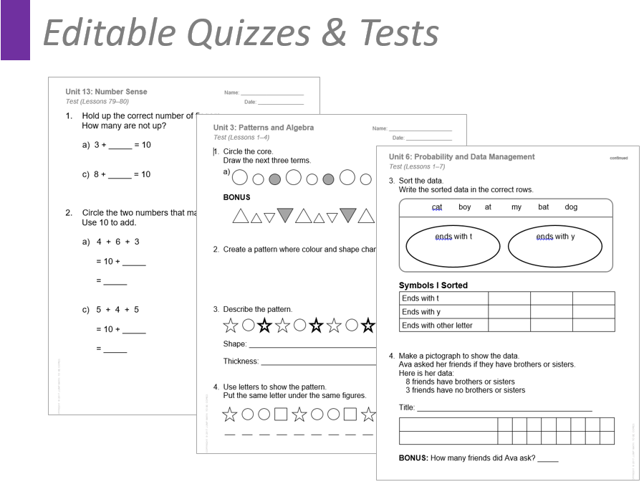
2.8 ᐊᒥᓱᓕᕐᑎᒉᑦ (BLM’s)
- ᐊᒥᓱᓕᕐᑎᒉᑦ ᐊᓪᓚᕕᑦᓴᖏᑦ ᐊᕕᑦᑐᓯᒪᔪᖃᐅᑎᓃᑦᑐᑦ ᐊᑐᓂᑦ ᐃᓕᓐᓂᐊᑎᑦᓯᔨᐅᑉ ᒪᓕᒐᖏᓐᓂ
- ᐃᓕᓭᓂᕐᒥ ᐃᒣᓘᖁᔨᒍᑎᖏᑦ
- ᐃᓕᓐᓂᐊᒐᑦᓴᖅ ᐅᕝᕙᓘᓐᓃᑦ ᐊᑐᕐᑕᐅᔪᑦᓴᖅ ᐊᕕᑦᑐᓯᒪᔪᖃᐅᑎᒥ
- ᐱᕕᑦᓴᖃᕐᑎᓯᔪᖅ ᐱᒋᐅᕐᓭᓂᕐᒥᒃ
- ᐊᑐᕐᑕᐅᑎᓗᒍᑦ ᓇᓗᓀᕐᓯᕖᑦ ᐱᐅᓕᓂᐊᒐᒋᒋᐊᓕᖏᓪᓘᓃᑦ
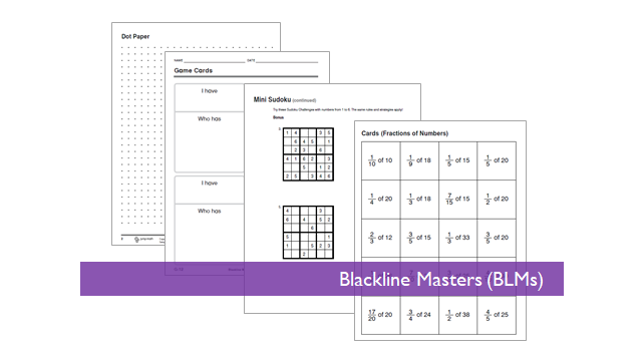
2.9 ᑎᑭᓭᓂᖅ JUMP ᓴᓇᑦᑐᓴᐅᑎᖏᑦᑕ ᐱᐅᓕᓂᐊᒐᖏᓐᓂᒃ
ᑐᔫᑎᒋᓗᒋᑦ ᑎᑭᓵᑎᑦ ᐊᒥᓱᓕᑎᕆᕕᒻᒧᑦ Printing.KSB@kativik.qc.ca
ᐅᓇ ᐅᖄᕕᒋᒋᐊᓖᑦ matthew.smith@kativik.qc.ca ᐊᐱᕐᓲᑎᑦᓴᖃᕈᕕᑦ ᐱᑦᔪᑎᒋᓗᒋᑦ ᐊᒥᓱᓕᐅᕈᑦᔭᐅᓃᑦ ᐊᒻᒪᓗ ᐃᓕᓐᓂᐊᑕᐅᔪᑦᓴᓂᒃ ᑎᑭᓭᓃᑦ.
ᐳᐃᒍᕐᑌᓕᒋᑦ ᑖᒃᑯᐊ ᐱᐅᓕᓂᐊᒉᑦ ᐊᑐᐃᓐᓇᐅᒥᒻᒪᑕ ᖃᕆᑕᐅᔭᒃᑯᑦ ᐃᓕᓐᓂᐊᕕᑦᓯᓂ ᖃᕆᑕᐅᔭᕐᑎᒍᑦ ᐊᑐᕐᓗᒍ DB ᖃᕆᑕᐅᔭᒃᑰᑎᑦᓯᒍᓐᓇᐅᑎ.
3. ᐱᐅᓕᓂᐊᒉᑦᐃᑲᔪᕐᓯᒍᑎᑦᓭᑦᐃᓕᓐᓂᐊᑎᑦᓯᓂᕐᒥ ᐃᓕᑦᓯᓂᕐᒥᓗ
3.1 ᐱᐅᓕᓂᐊᒐᖏᑦ ᐊᒥᓱᐃᓂᒃ ᐳᕐᑐᓂᓕᓐᓂᒃ ᐃᓕᓐᓂᐊᑎᑦᓯᕕᓐᓂ
ᑖᒃᑯᐊ ᐊᓪᓚᓯᒪᔪᓕᐊᕆᓯᒪᔪᑦ ᐃᑲᔪᕐᓯᓚᖓᔪᑦ ᑐᕌᓐᓂᖃᕐᓗᑎᒃ JUMP ᓴᓇᑦᑐᓴᐅᑎᖏᑦᑕ ᐃᓕᓐᓂᐊᒐᑦᓴᑕᖏᓐᓄᑦ ᐃᓕᓐᓂᐊᑎᑦᓯᒍᓐᓇᓂᖃᕐᓂᐊᕋᕕᑦ ᐃᓕᓐᓂᐊᑎᓕᒫᓂᒃ ᐊᑕᐅᑦᓯᑯᑦ.
ᐃᕐᖃᐅᒪᒋᒋᐊᓕᒃ: ᑌᒣᒐᓗᐊᕐᑎᓗᒍ, ᐃᓕᓐᓂᐊᒐᑦᓭᑦ ᐃᒻᒥᒍᑦ ᐳᕐᑐᓂᓕᓐᓄᑦ ᐱᔭᕇᑦᓯᐊᕆᐊᓖᑦ ᐅᕝᕙᓘᓐᓃᑦ ᐃᓕᑦᓯᔭᐅᒋᐊᓕᑦᑕᖓᓂᒃ ᑭᖑᓂᖓᒍᑦ ᓯᕗᓂᖓᒍᓪᓘᓃᑦ ᑐᑭᓯᒪᓂᕐᑖᕆᒋᐊᓕᖏᓐᓂᒃ
ᑕᑯᒋᐊᕐᓗᒋᑦ ᐃᓕᓐᓂᐊᑎᑦᓯᔨᐅᑉ ᒪᓕᒐᖓ ᓱᕐᖁᐃᑐᒥᒃ ᐱᔭᕆᒋᐊᓕᖏᓐᓂᒃ ᐊᑑᑎᑦᓯᐊᒪᖔᕐᐱᑦ ᐳᕐᑐᓂᕐᓄᑦ ᐊᑐᓂᑦ.
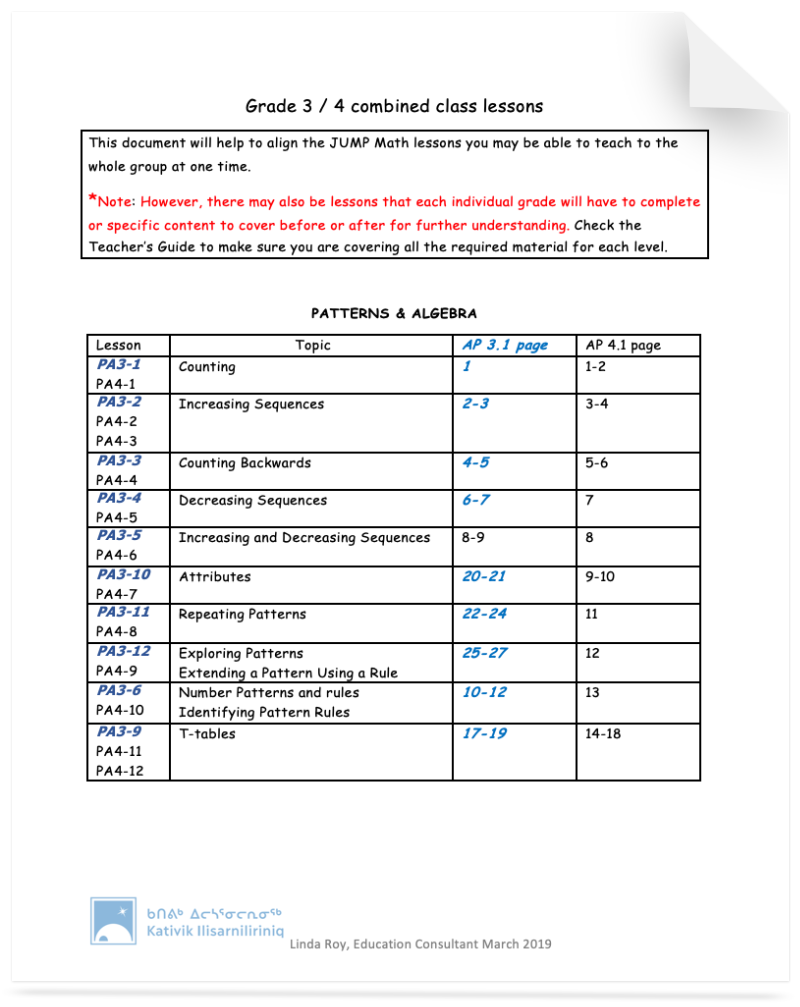
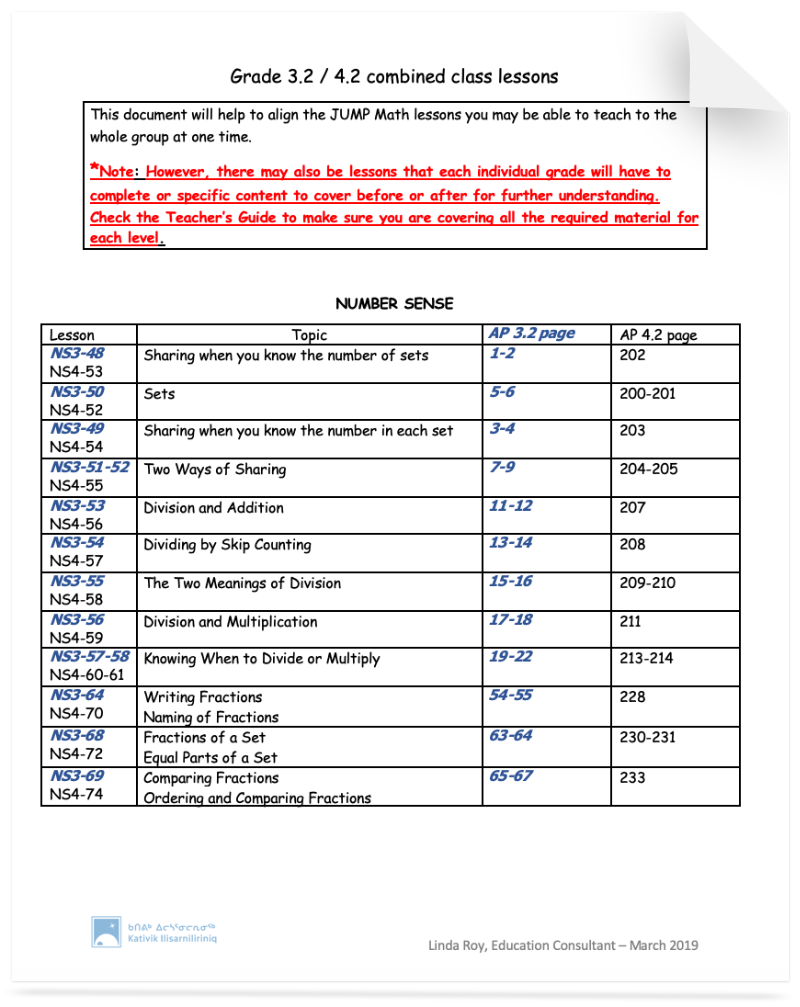
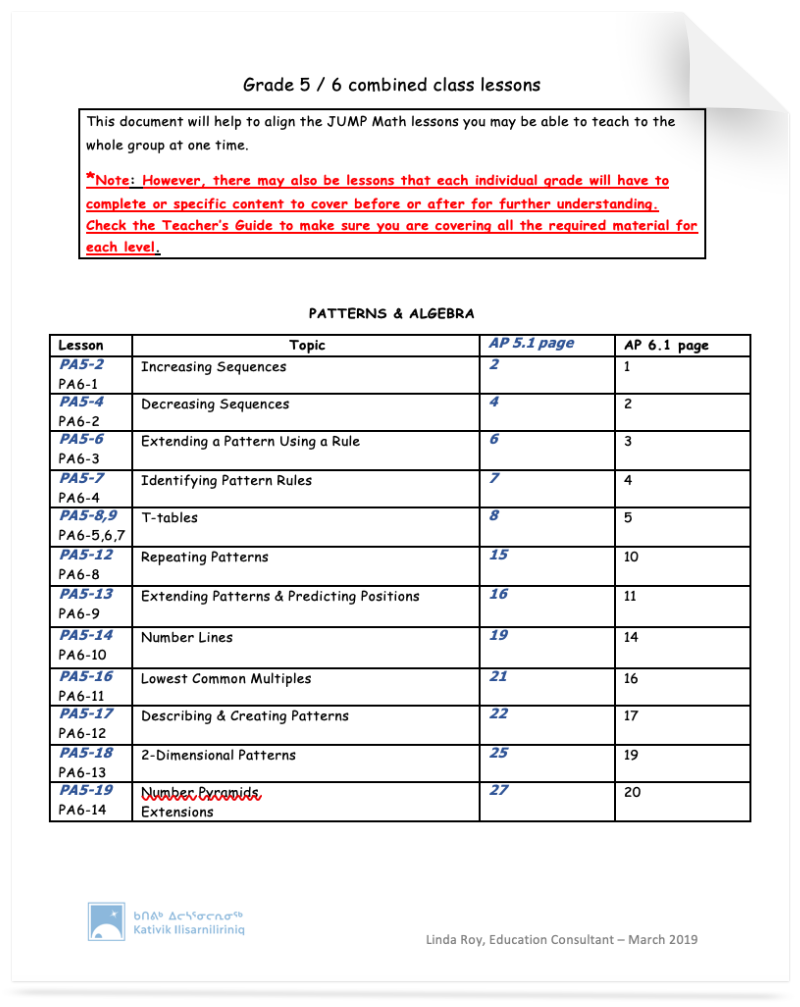
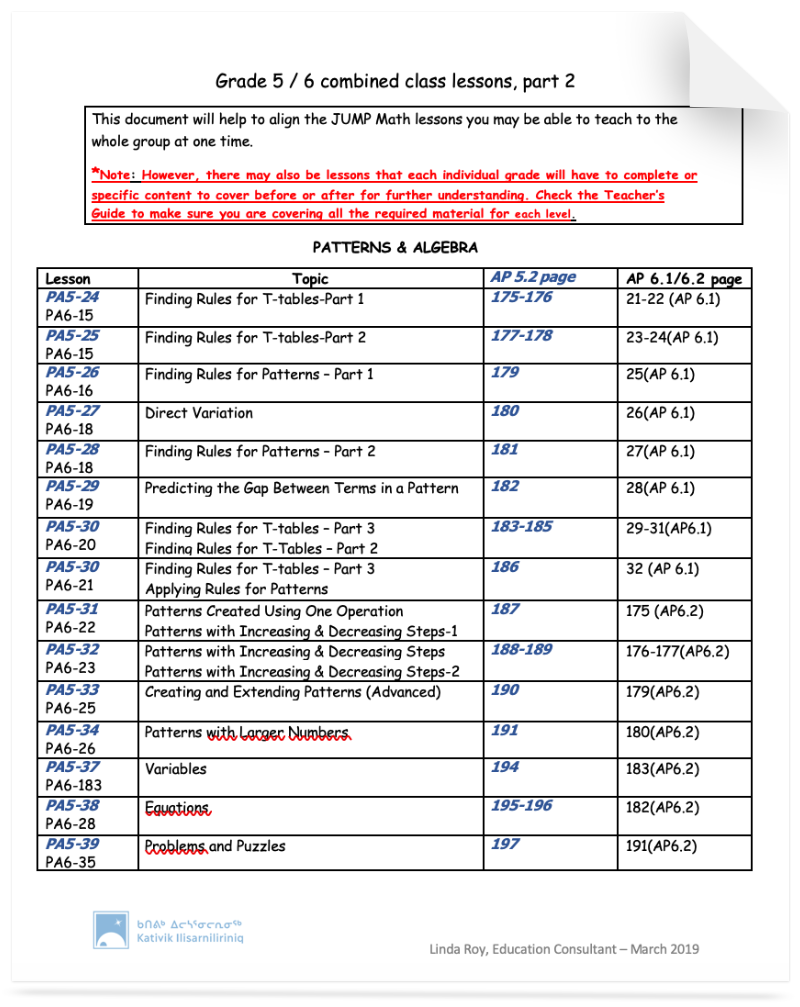
ᐃᕐᖃᐅᒪᒋᒋᐊᓕᒃ: ᐃᓕᓐᓂᐊᑕᐅᒋᐊᓖᑦ ᐊᓪᓚᓯᒪᔪᑦ ᑕᒡᒐᓂᑦᓭᓇᖅ ᑐᑭᒧ ᐱᔭᖃᕐᑎᓯᑐᐃᓐᓇᕆᐊᓕᒃ ᐊᓯᐊᒍᒋᐊᓪᓚᒃ ᐱᓇᓱᑦᑎᓯᒍᓯᒃᑯᑦ.

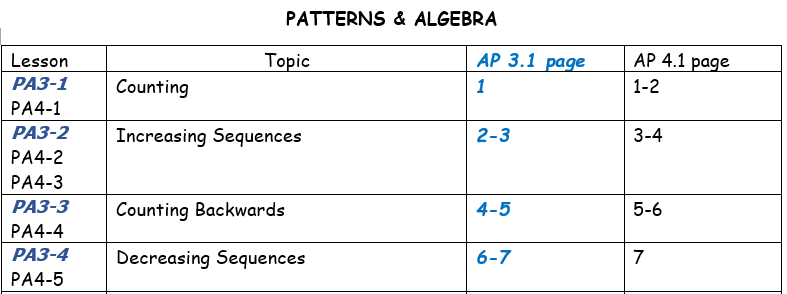
3.2 ᐅᖃᐅᓯᒥ ᐊᓯᐊᓂᒃ ᐊᑐᕆᐊᓖᑦ ᐅᖃᐅᓯᕐᑕᖏᓐᓂᒃ ᑐᑭᓯᒪᑎᑕᐅᓂᖏᑦ
ᐅᖃᐅᓯᕐᑕᖏᑦ ᓇᓗᓀᕐᑐᑕᐅᓯᒪᔪᑦ ᐃᓘᓐᓀᓂ ᐃᓕᑦᓯᑎᑦᓯᒋᐊᕐᓂᓄᑦ ᐸᕐᓀᒍᑎᓂ ᐱᑦᔪᑎᓕᓐᓂᒃ ᐸᕐᓀᒍᑎᓕᐅᖃᑦᑕᓂᐊᕋᕕᑦ ᑐᑭᓯᓇᕐᑎᓯᒋᐊᕈᑎᑦᓴᓂᒃ, ᐊᒻᒪᓗ ᓇᓗᓀᕐᑐᓗᒋᑦ ᐃᓘᓐᓇᑎᒃ ᑭᑎᑦᔪᑎᓐᓂᐊᓂᕐᒧᐊᖓᔪᑦ ᐅᖃᐅᓰᑦ ᐃᓕᑦᓯᑎᑦᓯᒋᐊᕈᑎᓄᑦ ᐸᕐᓀᓯᒪᐅᑎᓐᓃᕕᑦ,
- ᓄᑖᑦ ᐅᖃᐅᓰᑦ ᓄᐃᑕᖃᑦᑕᓚᖓᔪᑦ ᑖᓂᕆᓐᓂᓴᐅᓗᑎᒃ: ᓇᓗᓇᖕᖏᓂᕐᓴᐅᑎᒋᐊᕐᓗᒋᑦ
- ᓄᐃᓗᒍ ᑭᑎᑦᔪᑎᓐᓂᐊᓂᕐᒧᐊᖓᔪᓂᒃ ᐅᖃᐅᓯᕐᓂᒃ ᓄᐃᑕᑎᑦᓯᕕᒃ ᐊᑭᓐᓇᖅ: ᐃᓚᐅᑎᓗᒋᑦ ᐅᖃᐅᓰᑦ ᐊᓪᓚᑕᐅᒍᓯᖏᑦ ᐊᒻᒪᓗ ᐱᓇᓱᐊᕐᑕᐅᒋᐊᖃᕐᓯᒪᔪᓂᒃ ᓇᓗᓀᕐᓯᐅᑏᑦ, ᑫᓪᓗᑐᕐᓗᒋᑦ ᐃᓕᓵᑎᑦ ᐊᑐᖃᑦᑕᕆᐊᖃᕐᓂᖏᓐᓄᑦ ᑖᒃᑯᓂᖓ ᐅᖃᐅᓯᕐᓂᒃ ᐅᖄᓕᕈᑎᒃ.
- ᑕᑯᑎᑕᐅᖏᓐᓇᖃᑦᑕᕈᑎᒃ, ᐃᓕᓵᑦ ᐅᖃᐅᓯᕐᓂᒃ ᑎᒍᓯᕙᓪᓕᐊᒍᓐᓇᓯᑦᓯᐊᕈᓐᓇᑐᑦ ᐅᖄᓕᕈᑎᓗ ᑖᒃᑯᓂᖓ ᐃᓕᑦᓯᓯᒪᔭᒥᓂᒃ ᐊᕈᓐᓇᓯᑦᓯᐊᕈᓐᓇᓯᒍᓐᓇᓱᑎᒃ.
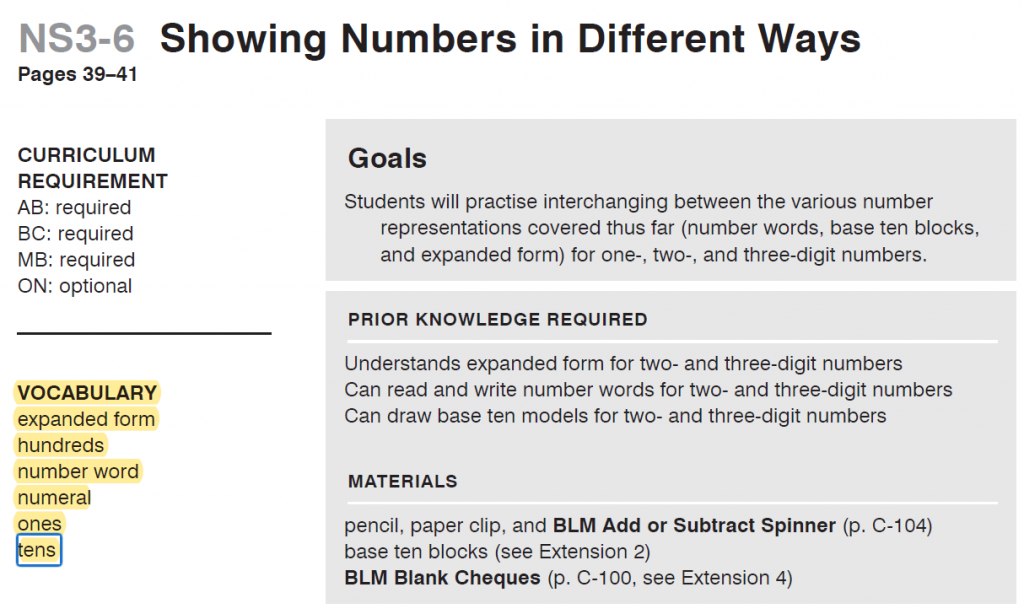
ᕿᒥᕐᕈᖃᑦᑕᓗᒋᑦ ᐅᖃᐅᓯᕐᑕᖏᑦ ᐃᓕᓭᒋᐊᓚᐅᕐᓇᒃ ᐊᒻᒪᓗ ᐸᕐᓀᓕᕈᕕᑦ ᐃᓕᐅᕐᖃᓯᒪᑎᖃᑦᑕᓗᒋᑦ ᑖᒃᑯᐊ ᐅᖃᐅᓯᕐᑕᖏᑦ ᐅᓪᓗᑕᒫᑦ ᑐᓴᕐᑕᐅᑎᖃᑦᑕᓗᒋᑦ ᐅᕝᕙᓘᓐᓃᑦ ᐱᓇᓱᐊᕈᓯᑕᒫᑦ.
ᓄᐃᖃᑦᑕᓗᒋᑦ ᑭᑎᑦᔪᑎᓐᓂᐊᓂᕐᒧᐊᖓᔪᑦ ᐅᖃᐅᓰᑦ ᐊᑭᓐᓇᖏᑦ ᐱᓇᓱᐊᕈᓯᓕᒫᒥ ᓄᐃᑕᑎᓗᒍᑦ
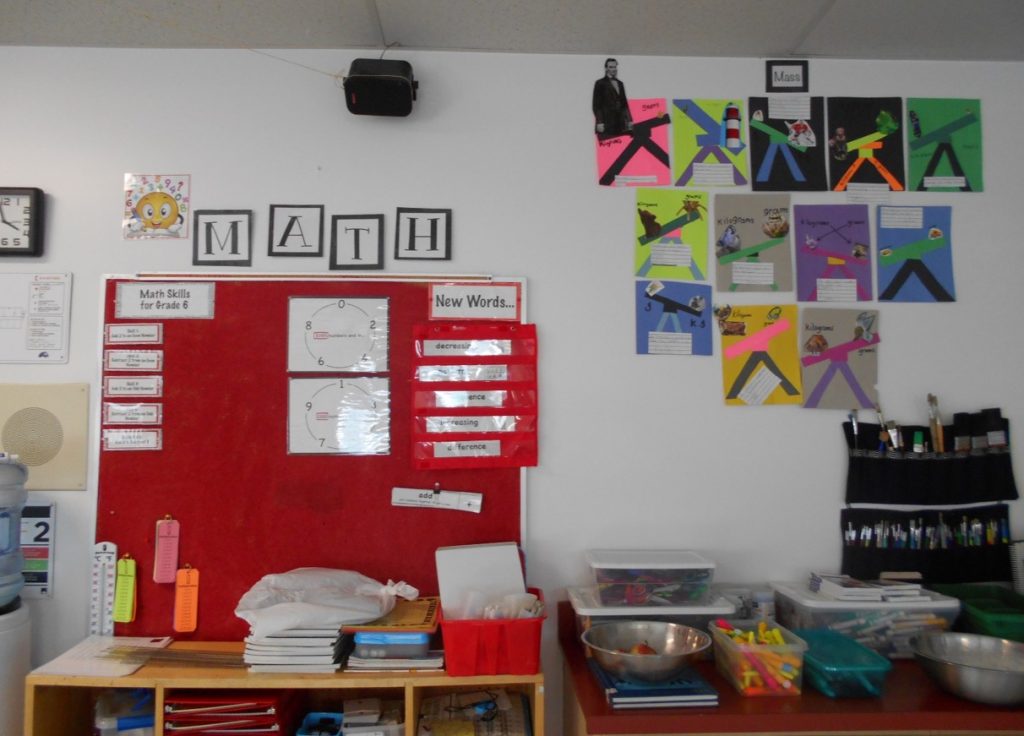
ᐅᓪᓗᑕᒫᑦ ᓯᓚᓐᓂᐊᓂᖅ ᑕᕐᕿᓕᕆᐅᑎᒥ ᐃᓚᒋᔭᐅᒍᓐᓇᑐᑦ ᖃᐅᑕᒫᕐᓯᐅᑎᖏᓐᓄᑦ ᓴᓇᑦᑐᓴᐅᑏᑦ
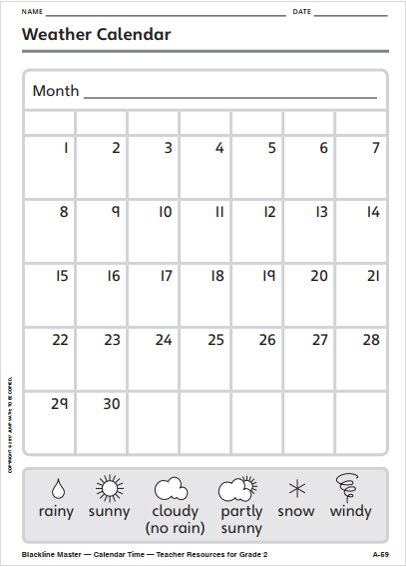
4. ᐃᓕᓐᓂᐊᑕᐅᔪᑦᓭᑦᐊᒻᒪᓗ ᖃᐅᔨᓴᕐᓂᖅ
4.1 ᐱᒍᓐᓇᓯᒋᐊᓕᖏᑦ
ᐅᑯᐊ ᐱᒍᓐᓇᓯᒋᐊᓕᖏᑦ ᐳᒃᑭᓂᕐᓴᒥ ᐃᓕᓐᓂᐊᑐᓄᑦ ᓴᓇᑦᑐᓴᐅᑎᓂ.
ᐱᒍᓐᓇᓯᔭᖓ 1
ᑐᑭᑖᕆᐊᓕᒻᒥᒃ ᑐᑭᑖᕆᒍᓐᓇᓯᓂᖅ ᓴᓇᑦᑐᓴᐅᑎᓅᓕᖓᔪᓂᒃ.
ᐱᒍᓐᓇᓯᔭᖓ 2
ᐃᓱᒪᑦᓴᓯᐅᕈᑎᖃᕐᓂᖅ ᓴᓇᑦᑐᓴᐅᑎᓐᓂᐊᓂᐅᑉ ᐃᓱᒪᒍᓯᖓᑕ ᐱᕙᓪᓕᐊᒍᓯᖓᒍᑦ.
ᐱᒍᓐᓇᓯᔭᖓ 3
ᐅᖄᖃᑎᖃᕈᓐᓇᓂᖅ ᓴᓇᑦᑐᓴᐅᑎᓕᕆᐅᑏᑦ ᐅᖃᐅᓯᖏᒍᑦ.
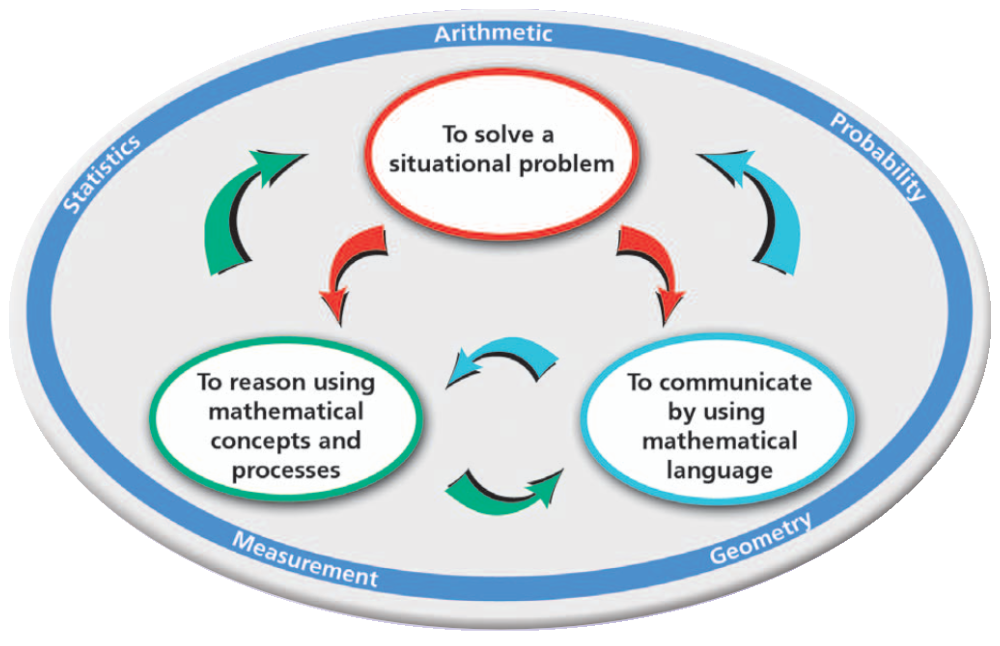
ᑕᑯᒍᒪᒍᕕᒋᑦ ᐃᓕᓐᓂᐊᑎᑦᓯᒍᑎᑦᓴᓅᓕᖓᔪᑦ ᐊᓪᓚᓯᒪᔪᓕᐊᖑᓯᒪᔪᑦ ᐳᒃᑭᓂᕐᓴᓂ ᓴᓇᑦᑐᓴᐅᑎᓄᑦ, ᑕᑯᒋᐊᕐᓗᒍ ᖃᕆᑕᐅᔭᒃᑯᑦ ᐅᓇ MEES website.
4.2 ᓱᓇᓕᕆᓂᖏᑦ
ᐱᕙᓪᓕᐊᑎᑦᓯᓂᖅ ᐱᒍᓐᓇᓯᒋᐊᓕᖏᓐᓂᒃᒃ ᓴᓇᑦᑐᓴᐅᑎᓕᕆᓂᕐᓂ ᓄᐃᑕᐅᒪᔪᑦ ᐃᓕᓐᓂᐊᓂᒃᑯᑦ ᑕᓪᓕᒣᑎᒍᑦ ᓱᓇᓕᕆᒋᐊᖃᕐᓂᖏᑎᒍᑦ.

ᓴᓇᑦᑐᓴᐅᑏᑦ ᐃᓗᓕᖏᑦ ᑭᓯᑦᓯᒍᑎᓕᕆᐅᑎᓂ ᐱᑕᖃᕆᕗᑦ JUMP ᓴᓇᑦᑐᓴᐅᑎᖏᓐᓂ ᐊᕕᑦᑐᓯᒪᔪᖏᓐᓂ ᑭᓯᑦᓯᒍᑎᓂᒃ ᑐᑭᖃᓚᑦᓯᓂᕐᒥ ᐊᒻᒪᓗ ᐋᕐᕿᓯᒪᒍᓰᑦ ᑭᓯᑦᓯᒍᑏᓪᓗ ᑕᐅᕐᓯᐅᑎᖏᓐᓂ. ᓴᓇᑦᑐᓴᐅᑏᑦ ᐃᓗᓕᖏᓐᓂ ᑐᑭᓯᓇᕐᑎᓯᒍᑏᑦ ᖃᐅᔨᓴᕐᑕᐅᓯᒪᔪᓂᒃ ᐃᒣᑐᐃᓐᓇᕆᐊᓕᕆᒍᑏᓪᓗ ᐱᑕᖃᕐᒥᔪᑦ JUMP ᓴᓇᑦᑐᓴᐅᑎᖏᑦᑕ ᐃᒣᑐᐃᓐᓇᕆᐊᓕᔪᓕᕆᔪᓂ ᖃᐅᔨᑎᑦᓯᒍᓰᑦ ᐊᕕᑦᑐᓯᒪᔪᖏᓐᓂ.
ᐊᑐᓂᑦ JUMP ᓴᓇᑦᑐᓴᐅᑎᖏᑦᑕ ᐊᕕᑦᑐᓯᒪᔪᖏᑦ ᓇᓗᓀᕐᑕᐅᓯᒪᒍᓯᓖᑦ ᓱᓇᓕᕆᓂᖏᓐᓂ, ᐳᕐᑐᓂᖏᓐᓂ ᖃᑦᓯᒦᓐᓂᖏᓐᓂᓗ.
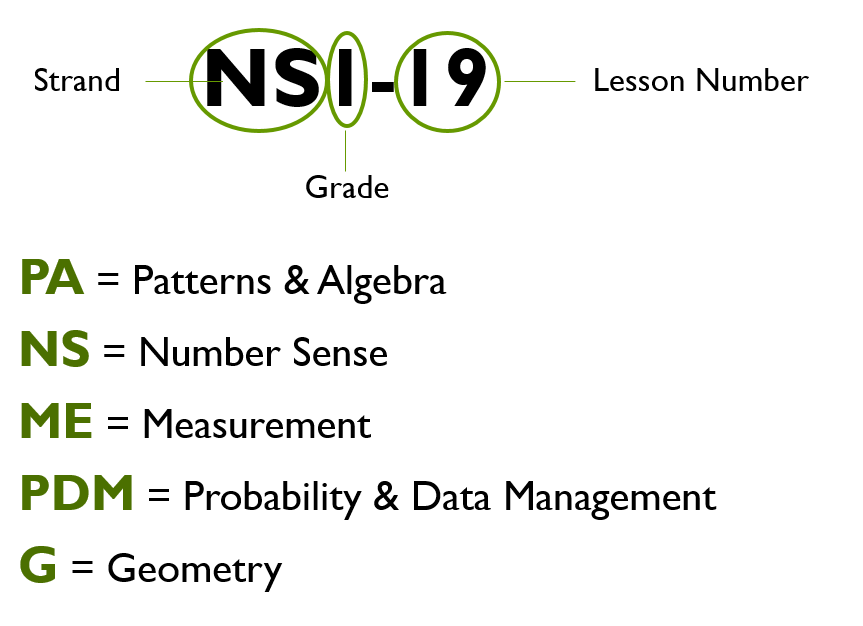
4.3 QEP ᑯᐯᒃ ᐃᓕᓐᓂᐊᓂᓕᕆᖓᑕ ᐱᒋᐅᕐᑎᓯᒍᑎᖏᑦᑕ ᖃᓯᕌᕐᑎᓯᓂᖏᑦ
2020-2021-ᒥ ᐃᓕᓐᓂᐊᓇᐅᑉ ᐊᕐᕌᒍᖓᓂ, ᐱᒋᐅᕐᑎᓯᒍᑎᖓ ᐱᔪᓐᓇᓯᒍᑎᒃ ᑭᑎᑦᔪᑎᖓ 2-ᒦᑦᑐᖅ 100%-ᕈᓚᖓᔪᖅ ᐃᓕᓐᓂᐊᑎᐅᑉ ᖃᑦᓯᕌᕐᓂᖓᓄᑦ ᐃᓕᓐᓂᐊᑎᐅᑉ ᐃᓕᓐᓂᐊᓯᒪᔭᖏᓐᓂᒃ ᑐᓴᕐᑎᓯᒍᑎᒥ.
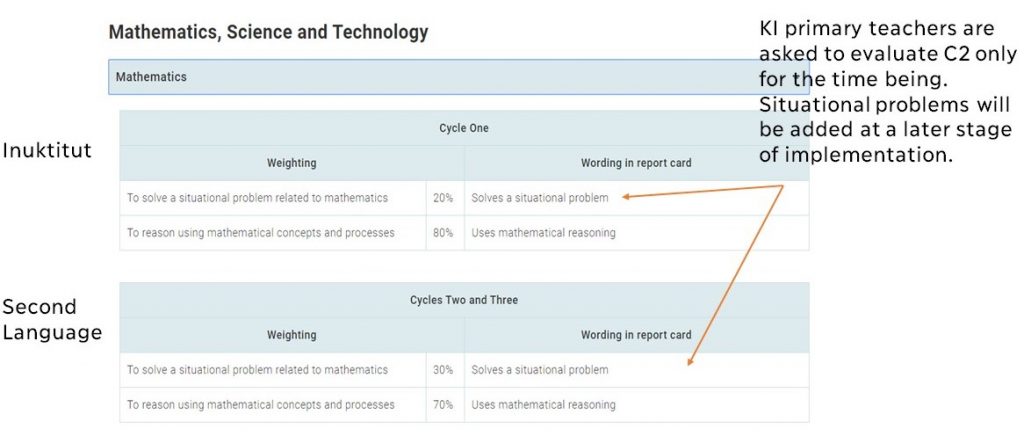
4.4 ᐱᒋᐅᕐᐸᓕᐊᒍᓯᖅ ᐃᓕᓐᓂᐊᓂᒃᑯᑦ
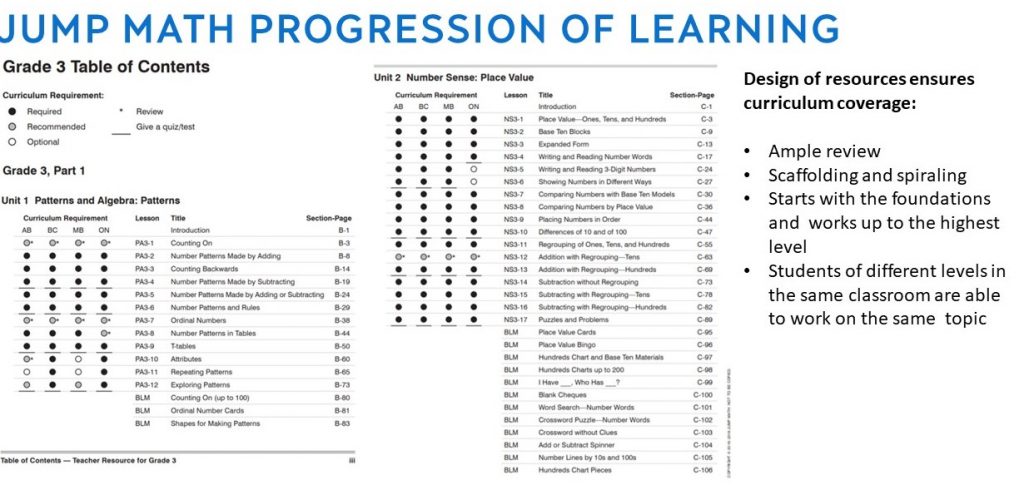
4.5 ᐃᓕᓐᓂᐊᑎᐅᑉ ᐃᓕᓐᓂᐊᓯᒪᔭᖏᓐᓂ ᒪᓕᒐᖏᑦ
ᐊᓪᓕᖓᓃᑦᑐᖅ ᐃᓂᓪᓚᖓᑎᑦᓯᒍᑎ ᓇᓗᓀᕐᓯᕕᐅᓯᒪᔪᖅ ᓀᓐᓂᐹᖓᒍᑦ ᐊᑑᑎᓪᓚᕆᐊᓖᑦ ᓱᓇᓕᕆᓃᑦ ᖃᐅᔨᓴᕐᑕᐅᒍᑎᒋᒋᐊᓕᖏᑦ ᐊᕐᕌᒍᖓᓂ 2020-2021. ᓯᕗᓪᓕᐹᒦᑦᑐᒧᑦ ᑐᖓᓕᖓᓃᑦᑐᒧᓪᓗ, ᑭᓯᑦᓯᒍᑎᓂ ᑐᑭᖃᓚᑦᓯᓂᖅ, ᐋᕐᕿᓯᒪᒍᓯᕐᓄᑦ ᑭᓯᑦᓯᒍᑏᓪᓗ ᑕᐅᕐᓯᐅᑎᖏᑦ ᐊᑑᑎᓪᓚᕆᒋᐊᓖᑦ ᕋᓗᐊᕐᑎᓗᒍ ᓱᓇᓕᕆᓃᑦ ᐊᑐᐃᓐᓇᐅᑐᐃᓐᓇᓚᖓᔪᑦ ᐃᓕᓐᓂᐊᑎᐅᑉ ᐃᓕᓐᓂᐊᓯᒪᓕᕐᑕᖏᓐᓂ ᑐᓴᕐᑎᓯᒍᑎᖏᓐᓂ. ᐃᓕᓐᓂᐊᑎᑦᓯᔩᑦ ᐊᑑᑎᖁᔭᐅᔪᑦ ᐊᓯᖏᓐᓂ ᓱᓇᓕᕆᐊᑦᓴᓂ ᐊᑐᓂᑦ Term-ᒥ ᐃᓕᓐᓂᐊᑏᑦ ᑭᖕᖒᒪᒋᔭᖏᑦ ᐃᑉᐱᒋᓗᒋᑦ.
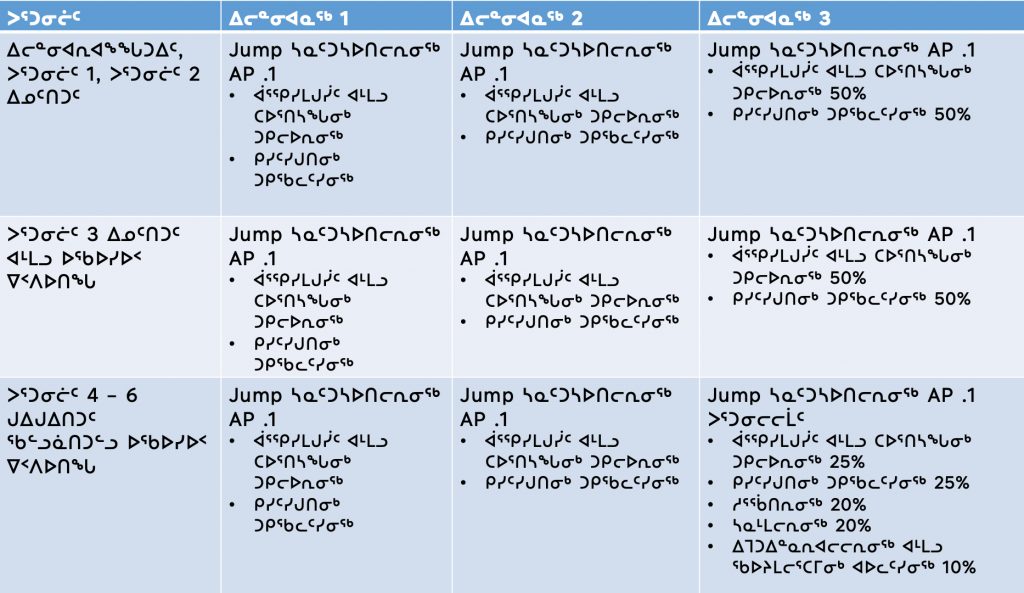
5. ᐃᓕᓐᓂᐊᑎᑦᓯᔨᐅᑉ ᓴᐳᑦᔭᐅᒍᑎᖏᑦ
5.1 ᐱᒋᐊᕐᐸᓕᐊᓂᖅ JUMP ᓴᓇᑦᑐᓴᐅᑎᖏᓐᓂᒃ
ᕿᒥᕐᕈᓗᒋᑦ ᐊᑐᐃᓐᓇᕈᕐᑎᓯᒪᔪᖅ ᐃᓕᓐᓂᐊᒐᑦᓴᖅ, ᐅᑯᐊ ᐃᑉᐱᒋᓗᒋᑦ:
- ᐃᓱᒪᒃᑯᑦ ᓴᓇᑦᑐᓴᐅᑎᕐᓂᖅ ᐊᑯᓂᐅᖕᖏᑐᖅ
ᓇᓪᓕᖏᓐᓂᒃ ᐱᒍᓐᓇᓯᓃᑦ (ᐊᑕᐅᓯᖅ ᒪᕐᕈᓘᓐᓃᑦ) ᖃᐅᔨᑎᑦᓯᒋᐊᖕᖓᓂᕐᒥ, ᐱᒋᐅᕐᓴᐅᑎᓂ ᖃᐅᔨᓴᕐᓱᑎᓪᓗ ᓯᕗᓂᖓᒍᑦ ᐃᓕᓐᓂᐊᒐᑦᓴᐅᑉ - ᐱᒍᓐᓇᓯᓃᑦ ᐃᓕᓐᓂᐊᒐᑦᓴᓕᐊᕆᓯᒪᔪᒥᒃ
ᐱᑐᑦᓯᒪᐅᑏᑦ ᐃᓕᖓᔪᑦ ᖃᕆᑕᐅᔭᒃᑯᑦ ᑕᑯᑦᓴᐅᑎᑦᓯᐅᑎᓄᑦ, ᓇᓪᓕᑳᕐᓗᒋᑦ, ᐃᓚᐅᕐᑐᓗᒋᑦ, ᐋᕐᕿᒋᐊᕐᓗᒋᑦ ᐅᕝᕙᓘᓐᓃᑦ ᓴᖑᑎᕐᓗᒋᑦ ᓴᐳᑦᔭᐅᒍᑎᑦᓴᑎᑦ ᐃᓕᓭᓂᕐᓅᕕᑦ ᐊᒻᒪᓗ ᐃᓕᓵᑦ ᓱᖏᐅᑎᕙᓪᓕᐊᒍᑎᒋᓂᐊᕐᑕᖏᑦ
ᓯᕗᓂᐊᒍᑦ ᐃᓱᒪᑦᓴᓯᐅᕈᑕᐅᒋᐊᓖᑦ ᐊᒻᒪᓗ ᑐᑭᑖᕈᑕᐅᒋᐊᓖᑦ:
- ᓯᕗᓂᐊᒍᑦ ᖃᐅᔨᒪᒌᕐᓯᒪᔭᖏᑦ ᐱᓯᑎᐅᒍᑎᖏᑦ ᐊᒻᒪᓗ ᕿᒥᕐᕈᓂᖅ ᑖᒃᑯᓂᖓ
- ᓇᓪᓕᖏᑦ ᐱᒋᐊᕐᑎᓯᐅᑎᑦᓭᑦ, ᐱᓇᓱᐊᕐᑎᓯᐅᑎᑦᓭᑦ, ᑲᒪᑎᑦᓯᐅᑎᑦᓭᑦ, ᑕᑭᓖᒋᐊᕈᑎᑦᓭᑦ?
- ᐱᕙᓪᓖᒍᓐᓇᑐᑦ ᐸᕐᓀᒍᑎᓂᒃ ᐃᓕᓭᓂᕐᒧᑦ, ᐅᖃᐅᓯᖃᕐᑎᓯᓂᕐᒧᑦ, ᓱᖏᐅᑎᓴᕐᑎᓯᓂᕐᒧᑦ
- ᖃᓄᐃᓘᕐᓗᖓ ᑐᑭᓯᒻᒪᖔᑕ ᖃᐅᔨᓴᖃᑦᑕᓂᐊᕐᖁᖓ?
- ᕿᒥᕐᕈᒋᐊᓪᓚᕈᑏᑦ ᖁᑉᐱᒐᕐᓂᒃ ᑖᒃᑯᓄᖓᐅᓕᖓᔪᓂᒃ AP ᐊᑐᐊᒐᕐᓂᒃ ᐊᒻᒪᓗ ᑐᑭᑖᑐᐃᓂᖅ ᓇᓪᓕᐊᓂᒃ ᐊᐱᕐᓲᑎᓂᒃ ᑎᓕᐅᕆᒍᑎᖃᖃᑦᑕᓂᐊᕐᒪᖔᑉᐱᑦ
ᐸᕐᓀᕕᒃ ᐃᓕᓐᓂᐊᑎᑦᓯᔩᑦ ᐱᓇᓱᐊᖃᑎᒌᕝᕕᓴᖓᓂᒃ
- ᓀᑦᑐᒧᑦ ᐊᒻᒪᓗ ᑖᕗᖓᓕᒫᖅ ᐸᕐᓀᒍᑎᓕᐅᕐᓂᖅ
- ᐸᕐᓀᒍᑎᓕᐅᕐᓂᖅ ᐳᕐᑐᓕᕇᓐᓂᖏᑦ ᐃᓱᒪᒋᓗᒋᑦ
- ᐸᕐᓀᒍᑎᓕᐅᕐᓂᖅ ᐳᕐᑐᓂᒃ 3-ᒥᒃ ᐃᓕᓭᔨᓄᑦ, ᐃᓄᑦᑎᑐᑦ, ᖃᓪᓗᓈᑎᑐᑦ ᐊᒻᒪᓗ ᐅᐃᒍᐃᑎᑐᑦ
- ᐸᕐᓀᒍᑎᓕᐅᕐᓂᖅ ᐃᓚᐅᑎᓗᒍ Gr. 1 ᐊᒻᒪᓗ 2 ᐅᖃᐅᓯᓪᓚᕆᐅᑉ ᑐᖓᓕᐊᓂᒃ ᐊᑐᕆᐊᓕᖓᓄᑦ ᐃᓕᓭᔨᐅᑉ (ᐅᖃᐅᓰᑦ)
5.2 JUMP ᓴᓇᑦᑐᓴᐅᑎᖏᑦᑕᐃᓕᓐᓂᐊᑎᑦᓯᒍᑎᖏᑦᖃᕆᑕᐅᔭᒃᑯᑦ ᑕᑯᑦᓴᐅᑎᑦᓯᕕᖓ
